Visualising a COVID-Safe Triathlon
On 12th September 2020, Founder and head coach Philip Hatzis was invited to Blenheim Palace Triathlon. Usually, one of the largest events in the country and one famous for its levels of participation. Here are his insights on the day and hopefully will help you settle any questions you may have on how triathlons can be COVID-Safe.
Over the past 6-months or so, I have had the pleasure of being part of a working group of race organisers, British Triathlon and other stakeholders for triathlon whose sole focus has been getting triathlons back to the calendar while protecting the athlete’s welfare. It has been an illuminating experience of collaboration at it’s finest and one that the Triathlon Industry Association (whom TTH are members of) who organised it initially and British Triathlon should be proud of. I hope to see something like this continue.
As a result of these interactions, we were invited by Limelight Sports who organise Blenheim Palace Triathlon to visit the race venue as it was one of the earlier larger races to get back to the start line. It demonstrated the pinnacle of the collaboration the triathlon community was witnessing to return to play. Below, I outline my observations and hope to use images and video to help familiarise athletes with what the “new normal” may look like at events coming up.
To help with looking at this race, I have put the key areas into a video which is below for you to see how it all operated. It starts with the swim start; 1:36 Swim exit; 2:15 Transition set up; 2:30 T1 and T2; 2:43 Mount/dismount line, 3:00 Finish Line.
Pre-Arrival
Though I wasn’t racing, I was asked to fill out a pre COVID form for track and trace as well as “sign up” to the fact I was spectating as only one spectator was allowed per participant. Participants received their race pack in advance, so there was no significant registration, or queuing.
Arrival
Getting to the car park was straightforward. There were plenty of signs for directions as well as reminders on social distancing and to wear a mask if you couldn’t. For the most part, except when in tents for the race village, you could easily socially distance though all staff had a mask on permanently. You were temperature-checked on your way into the venue as well as asked to declare you hadn’t been to one of the 14-day quarantine listed countries, hadn’t been ill recently, etc. Then participants went through the race village to transition. The queue into transition was managed and each wave had their slot. There was plenty of space and the portaloos had their own sanitisers and had the shortest queues I have ever seen at a race!
Below are some images so you can see what it looks like.
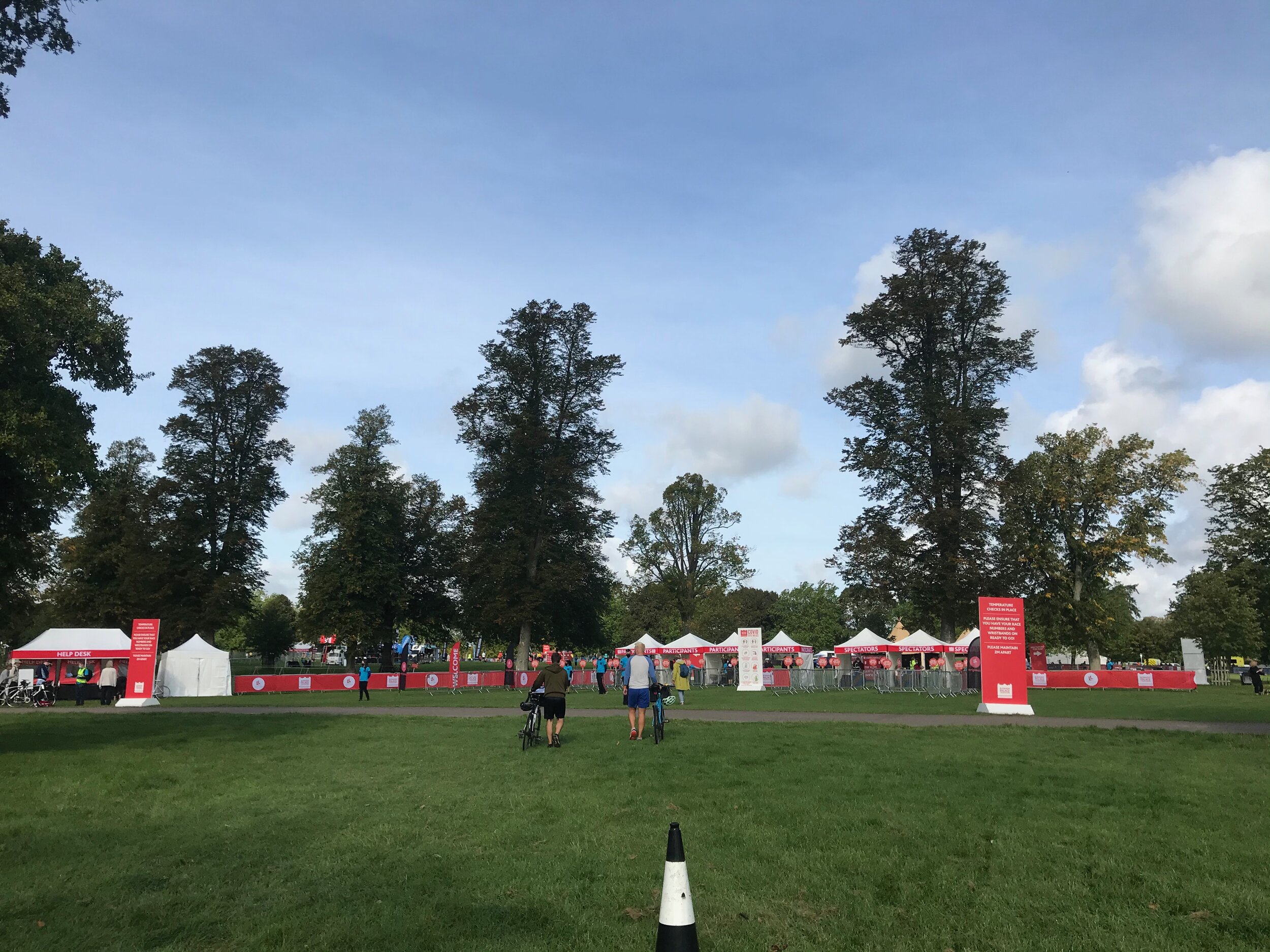
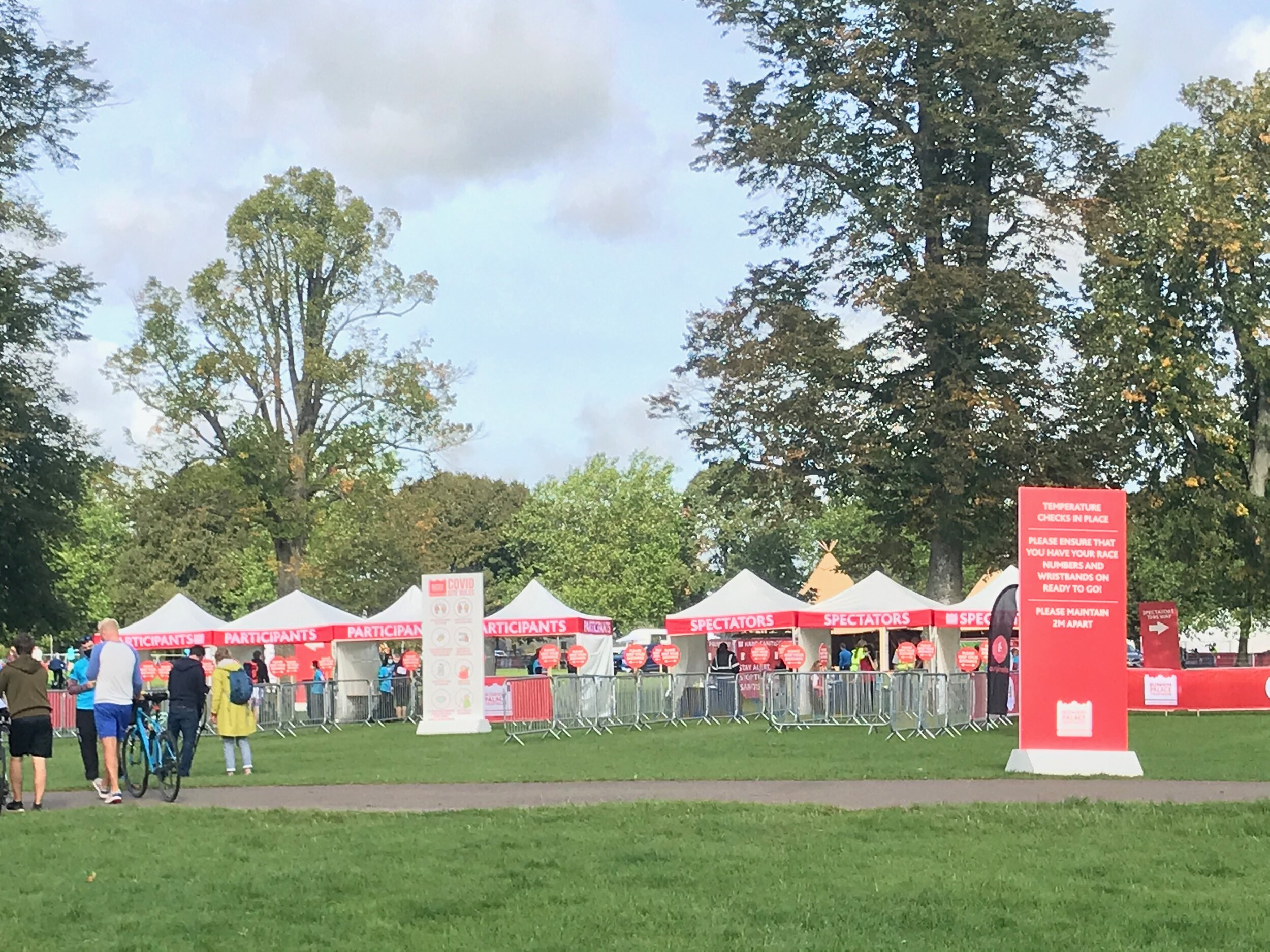
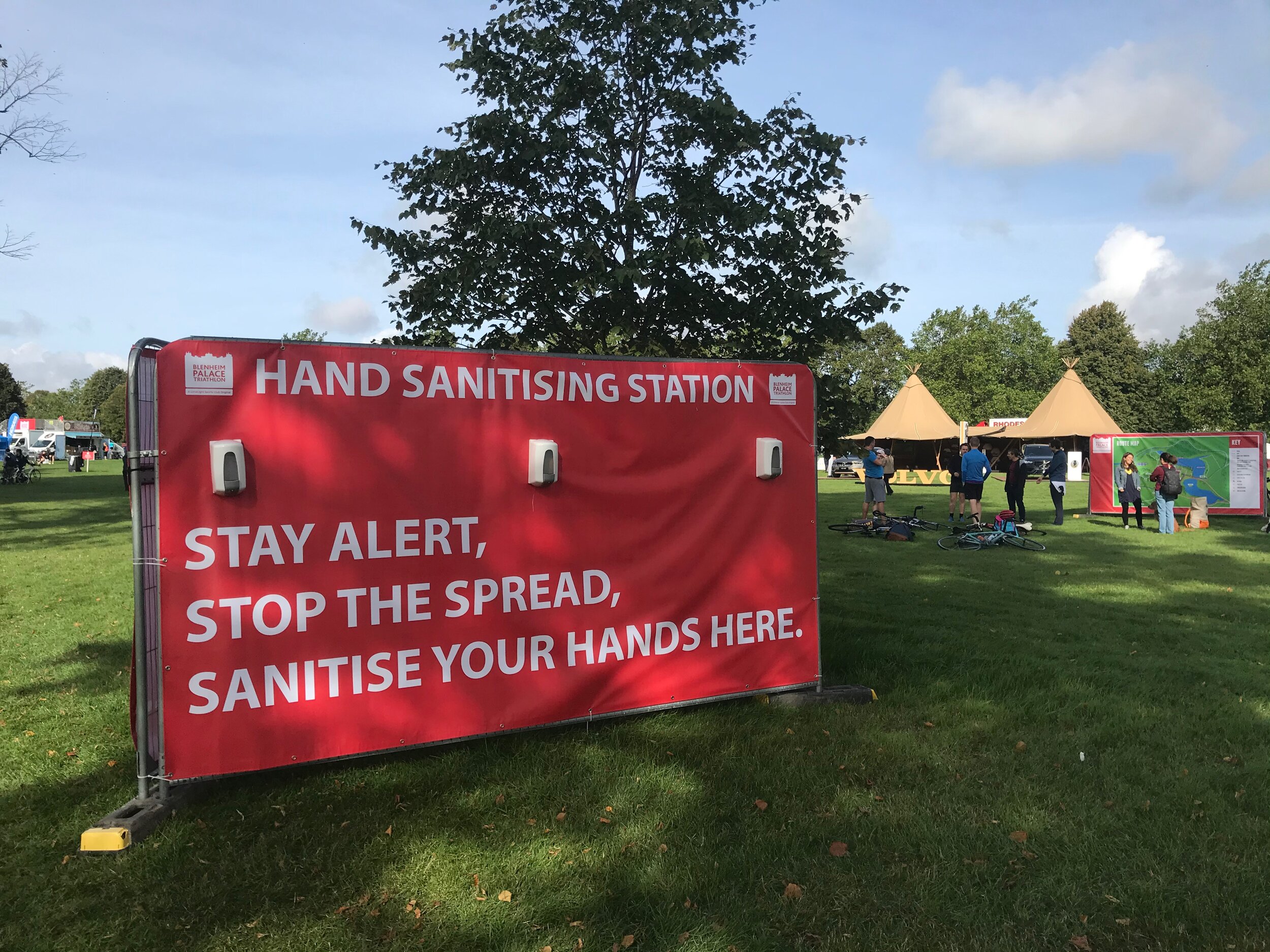
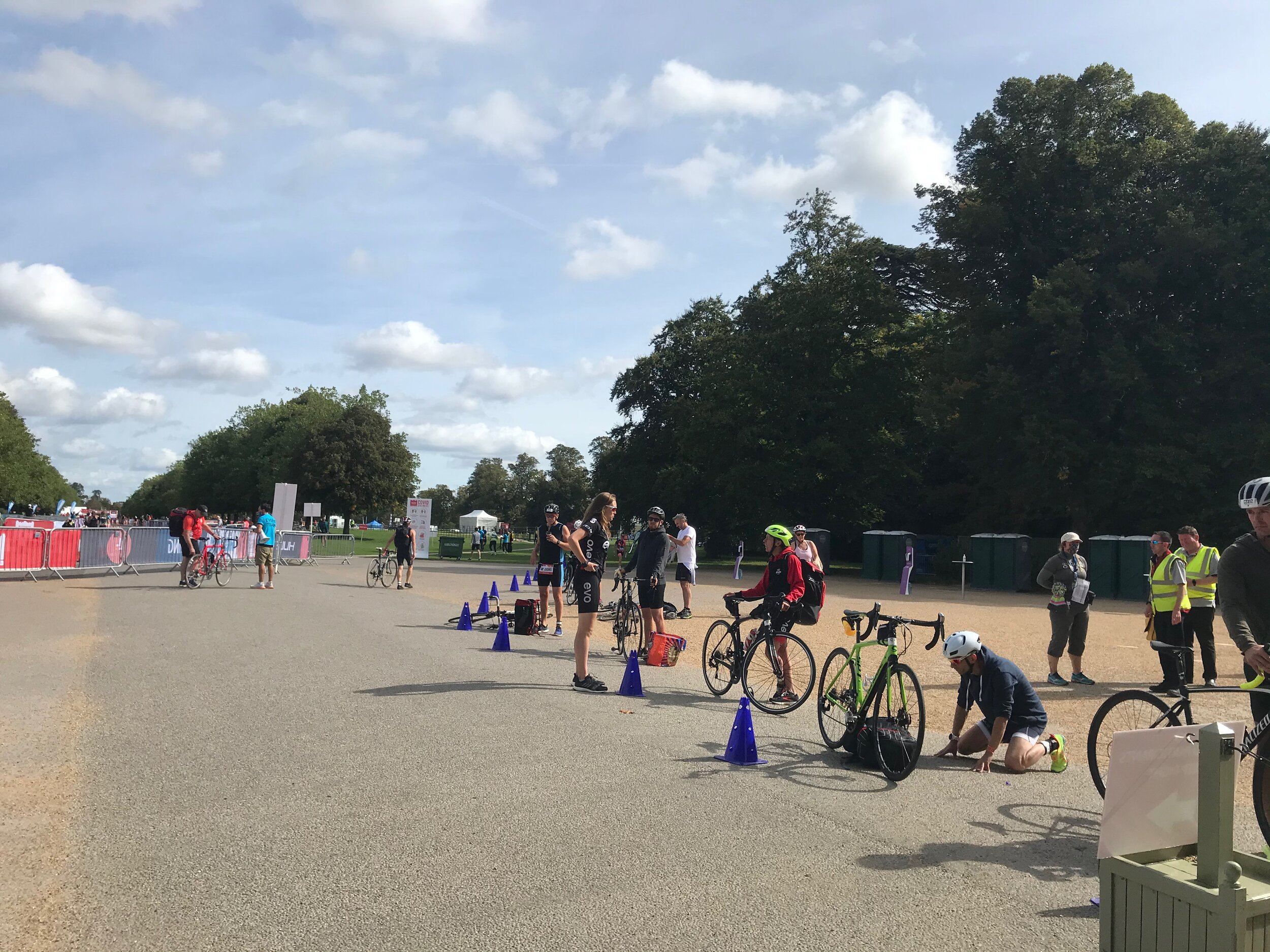
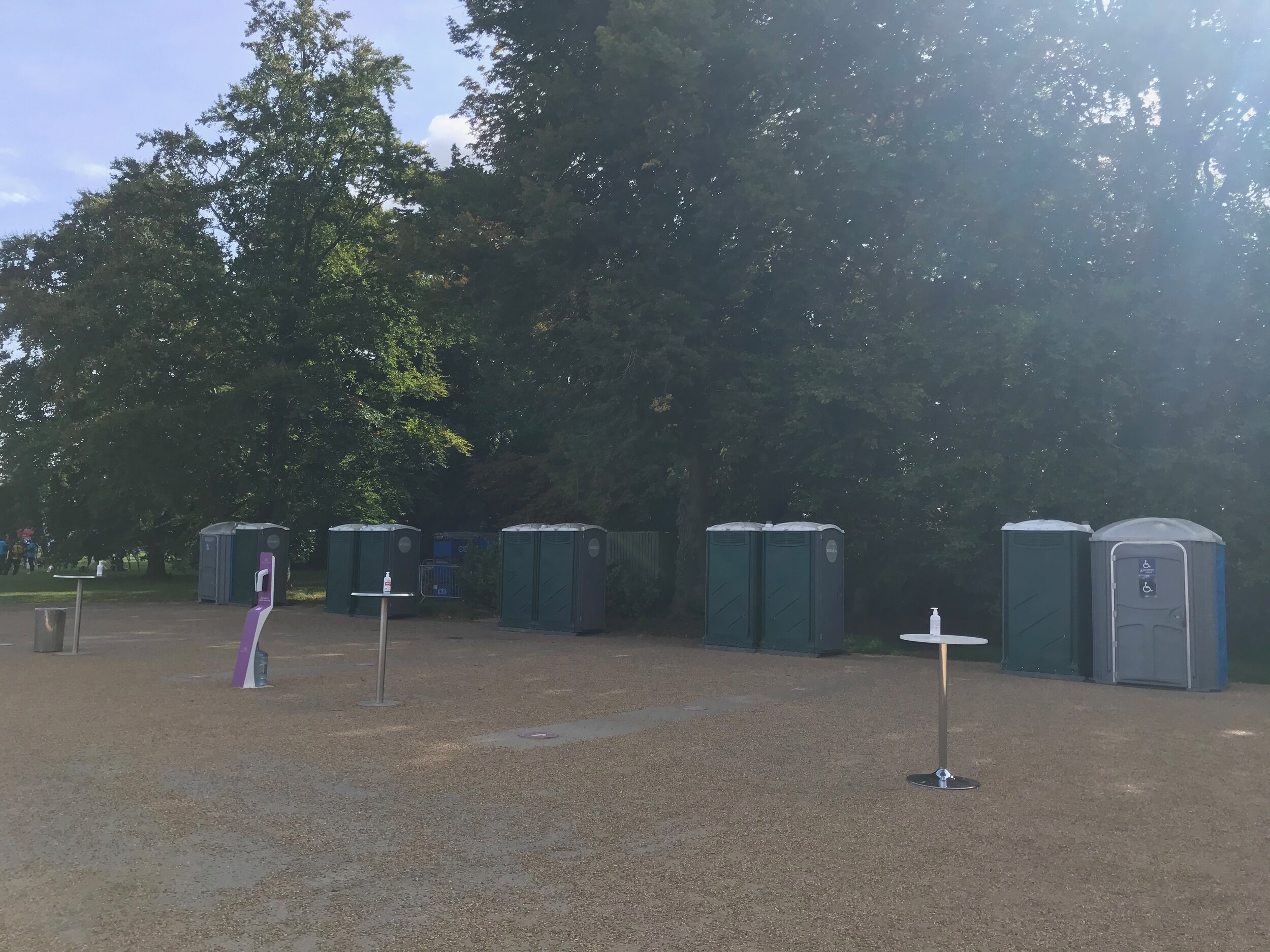
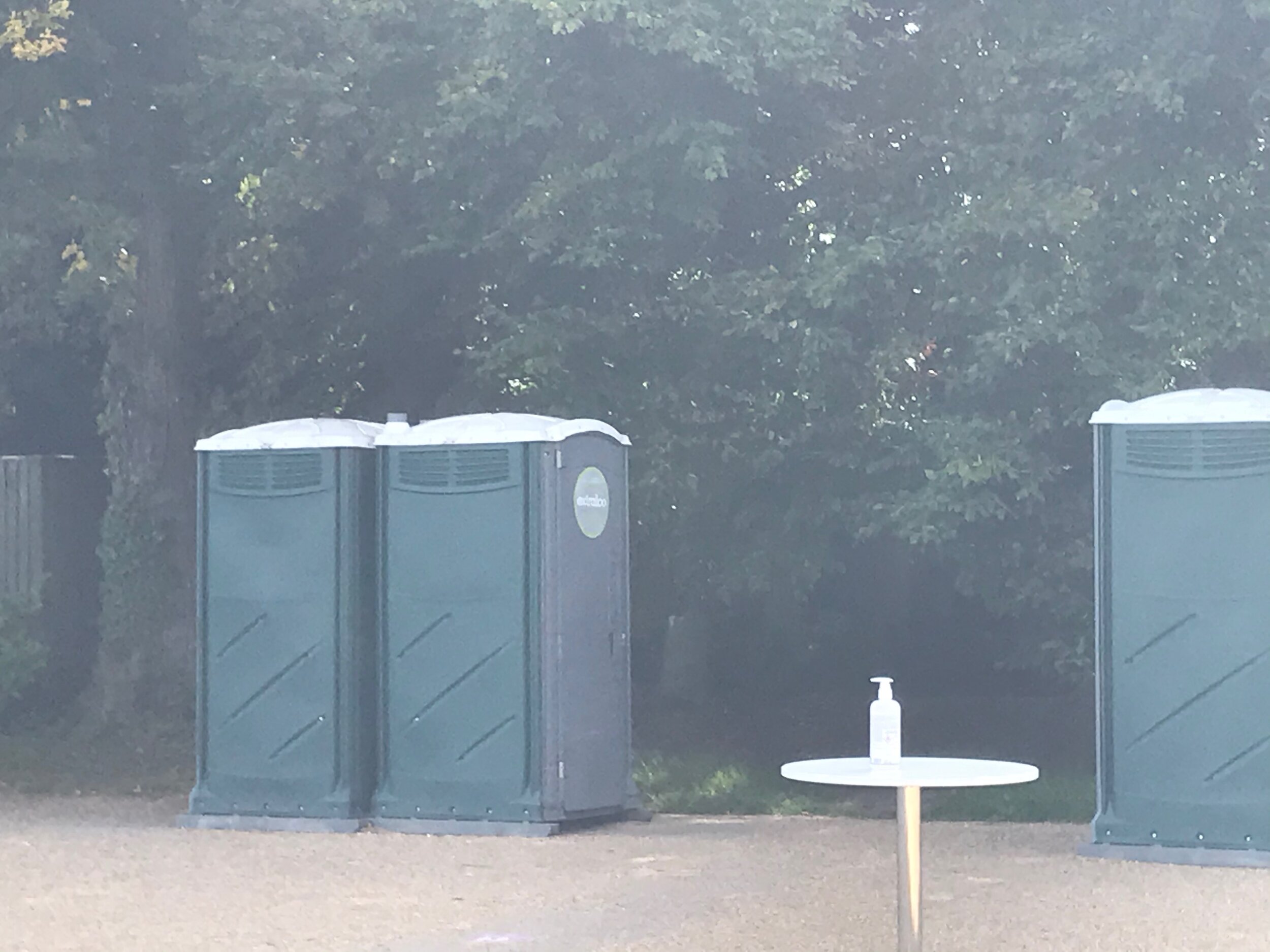
Transition Set up and discipline changes.
Blenheim triathlon has always operated a wave series, and so waves were not new for them. Each wave had its own racking which was spaced out substantially more than usual. Each wave/rack was not allowed into the transition area until a set time, and the queuing was spaced out and organised. Each athlete had a two-metre gap between each racking space. At the same time, competitors finishing the bike or swim section ran along the channels outside the racking to their respective racks and moved onto the next discipline. I have never seen such an empty or organised transition. As shown in one of the images below, each wave and rack had to be out of the transition area by a set time to allow for a clear up and cleaning.
Below are some images so you can see what it looks like.
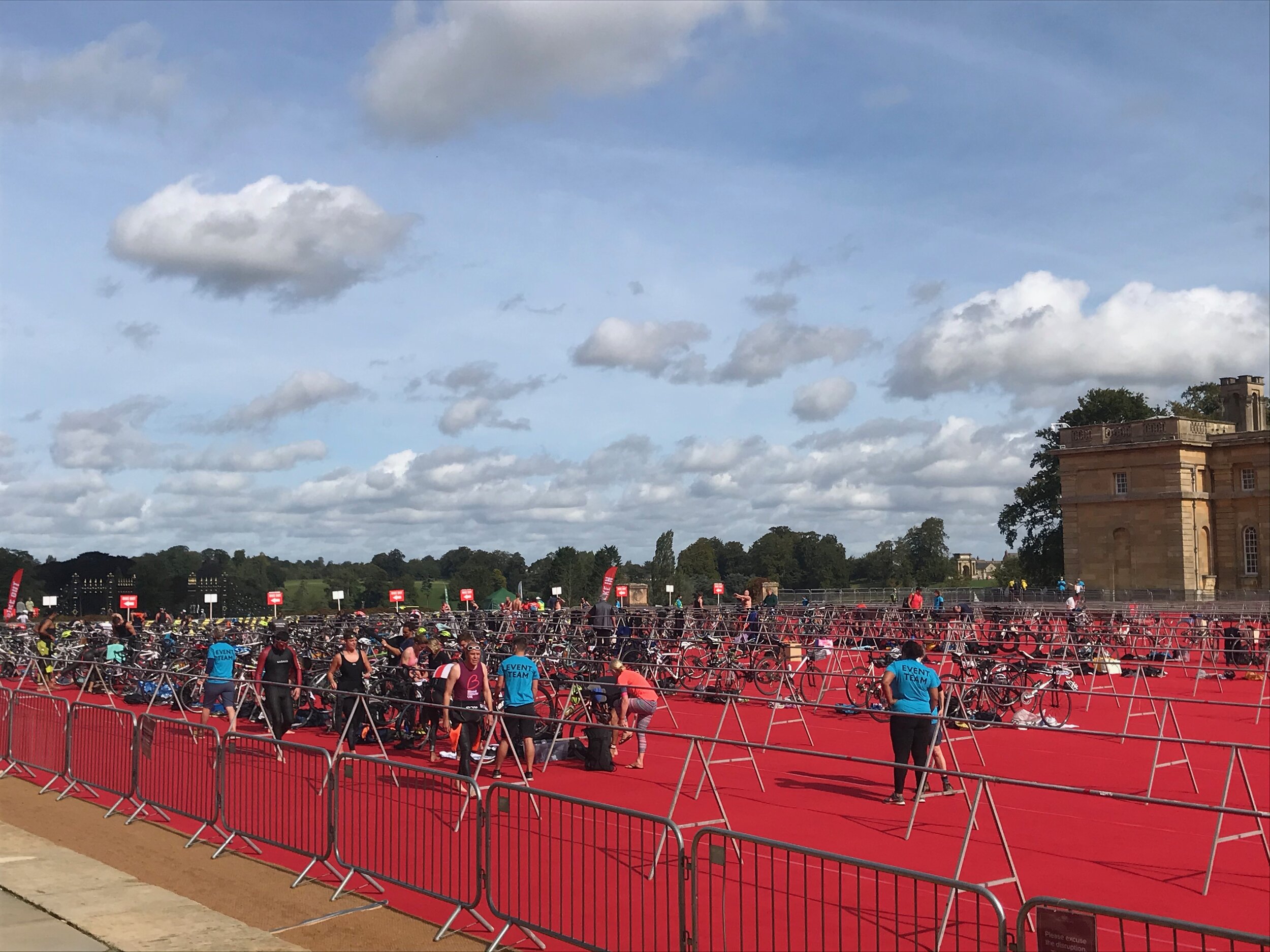
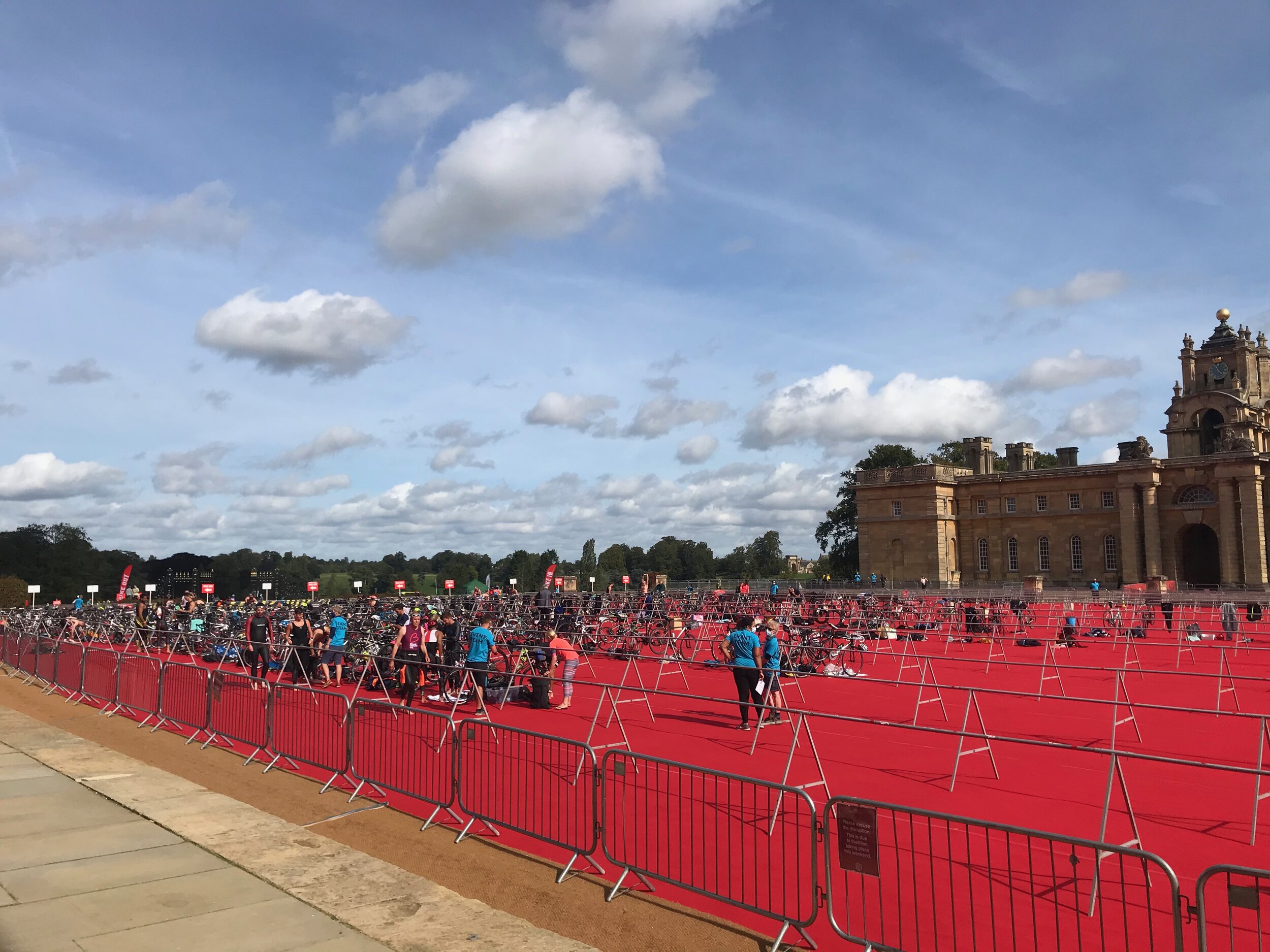
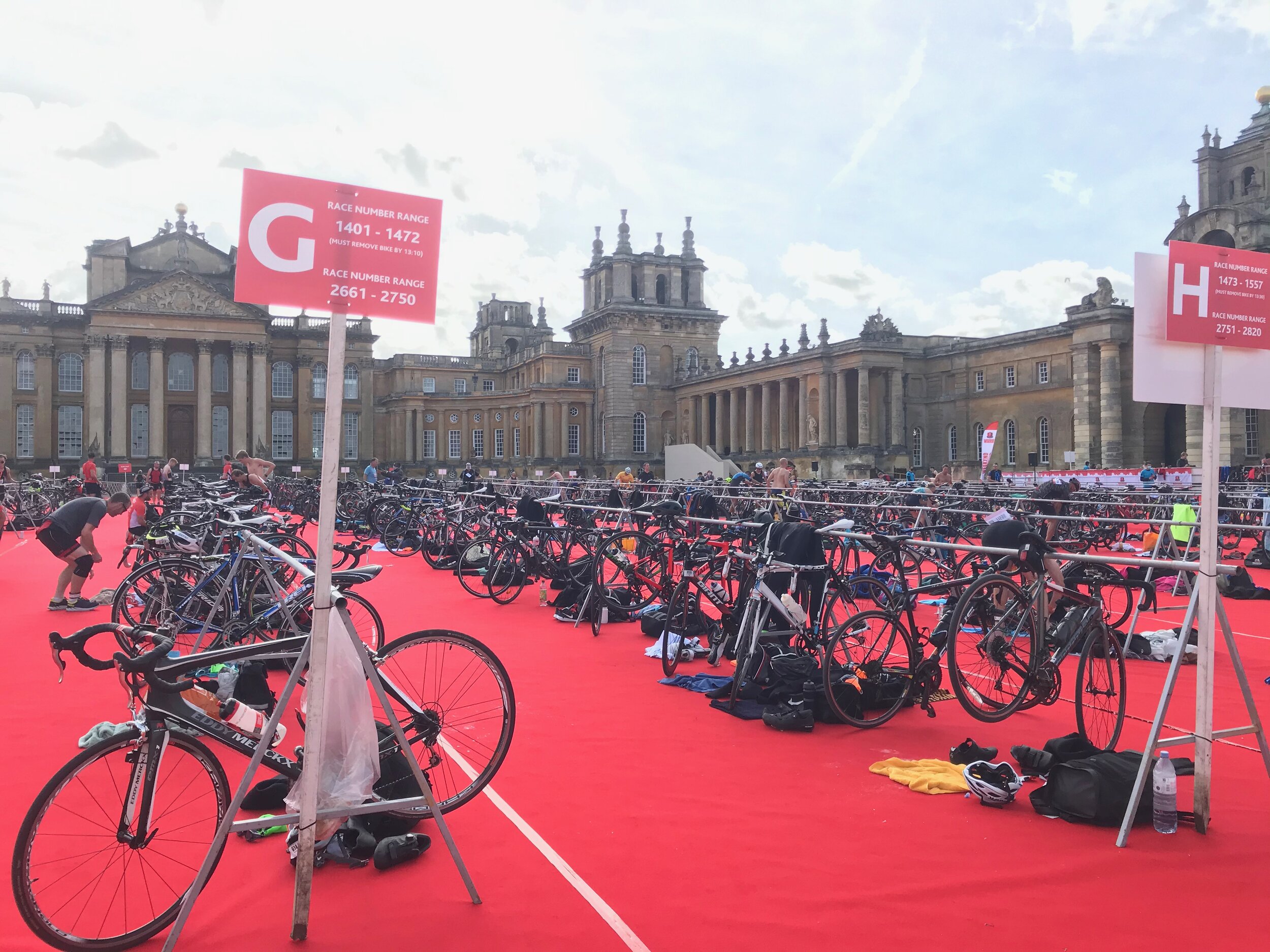
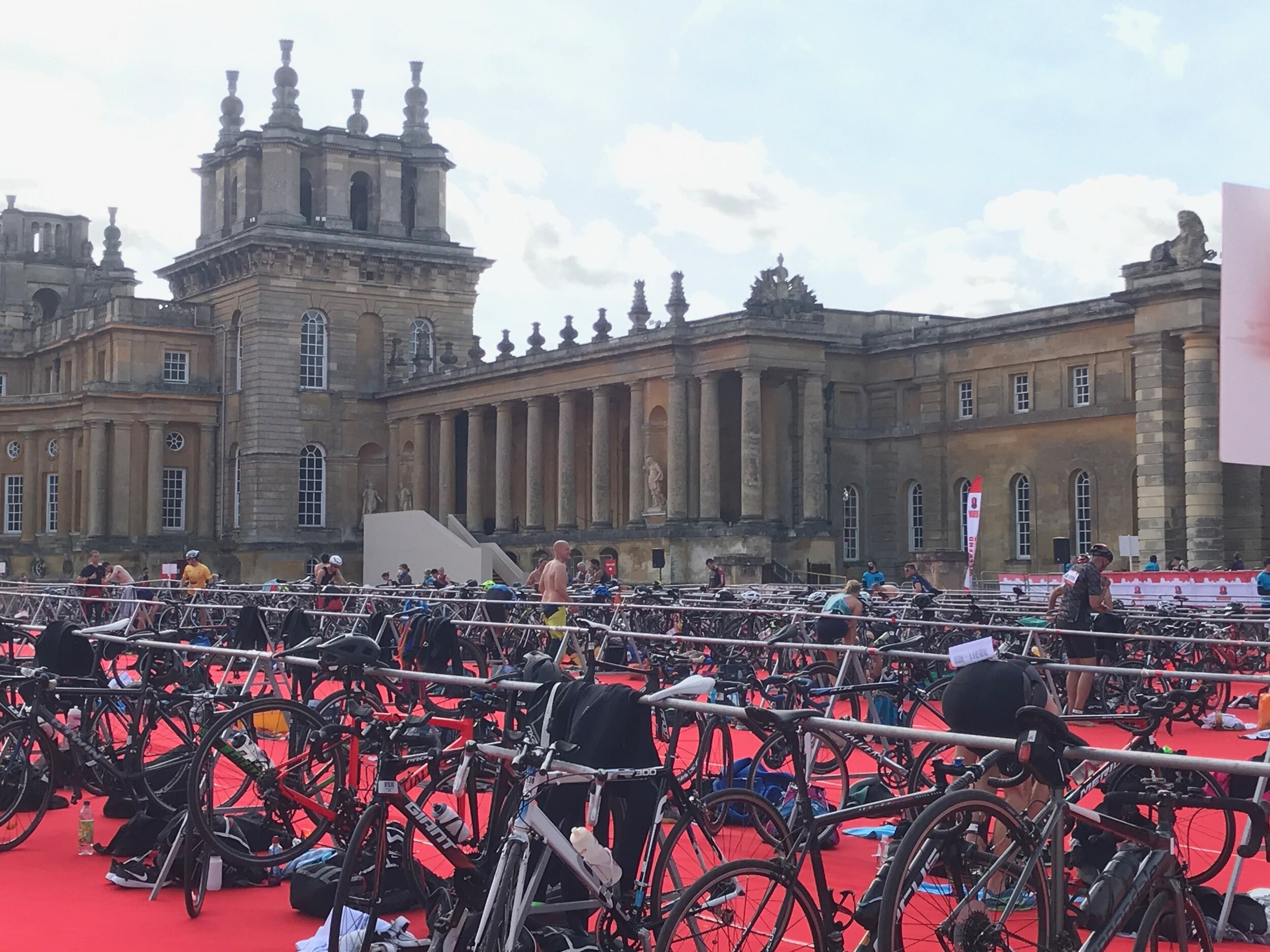
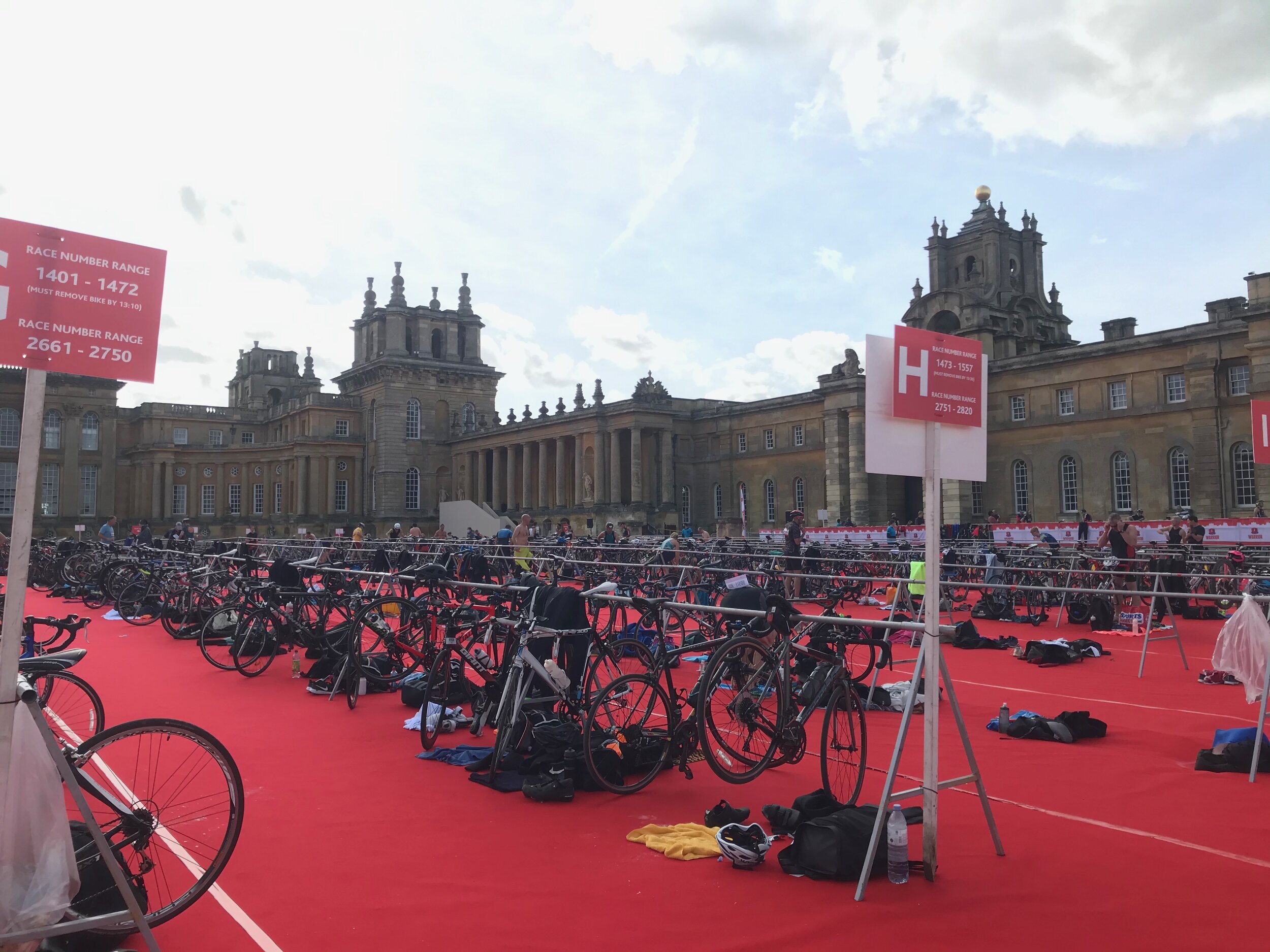
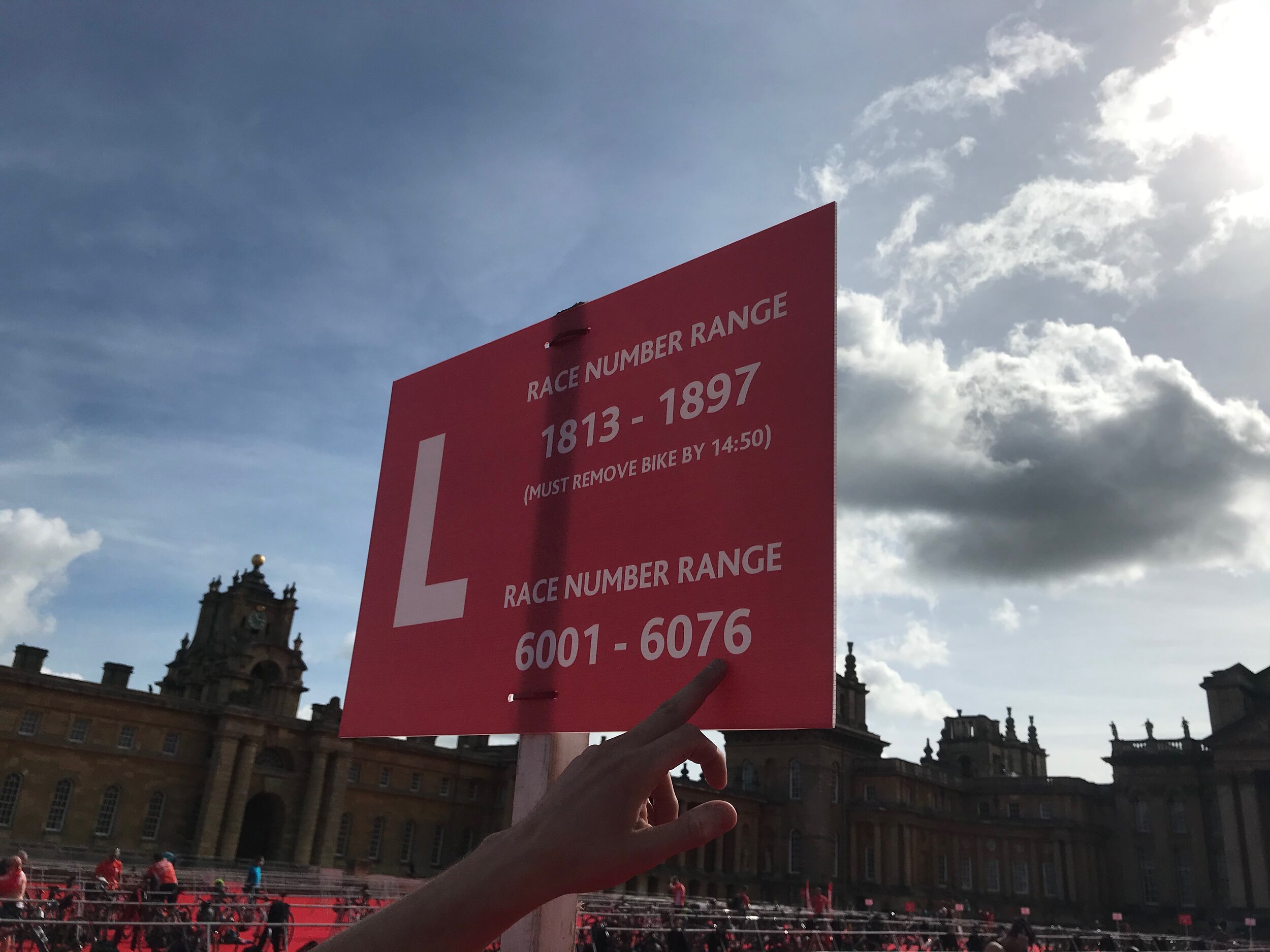
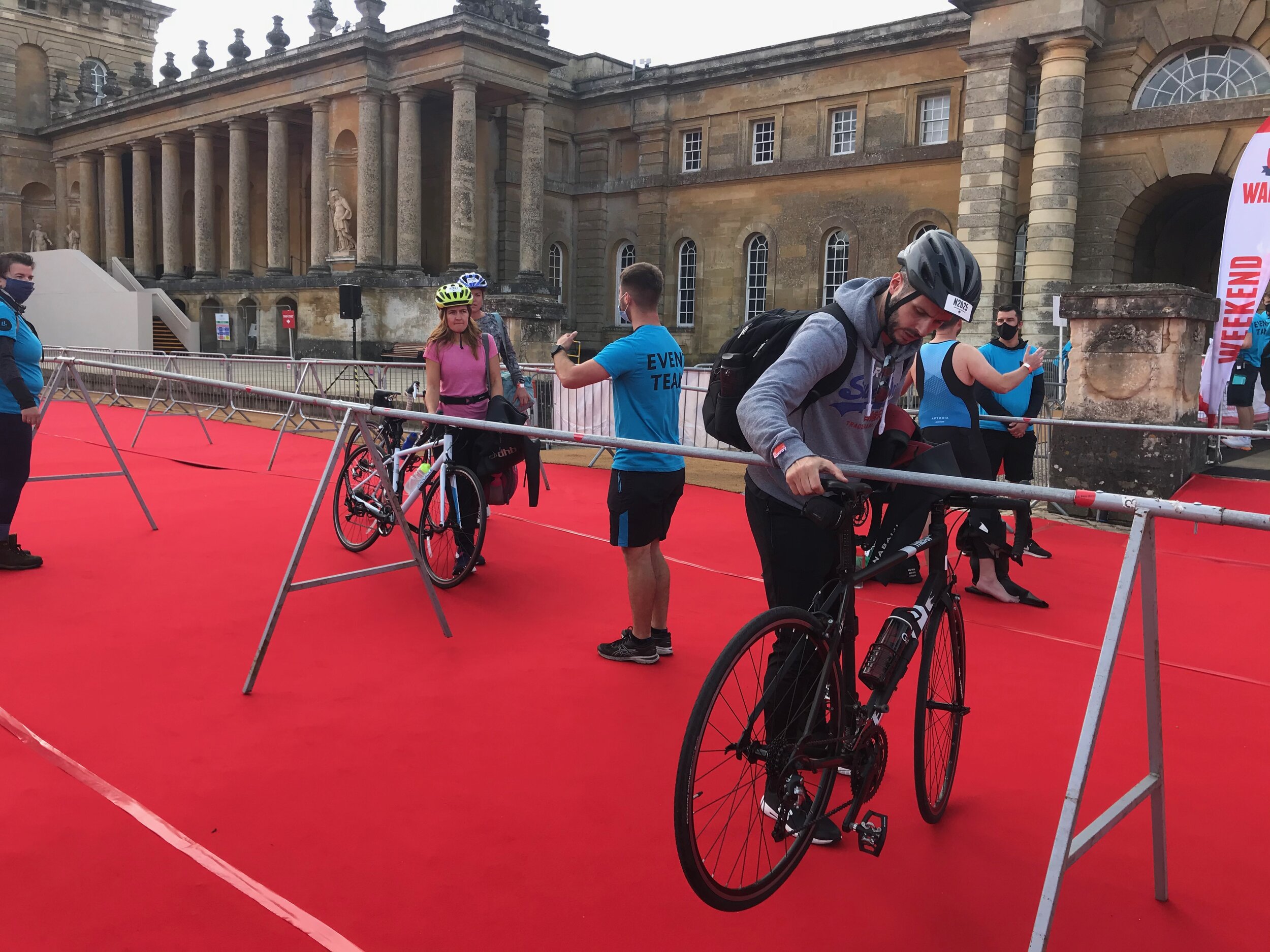
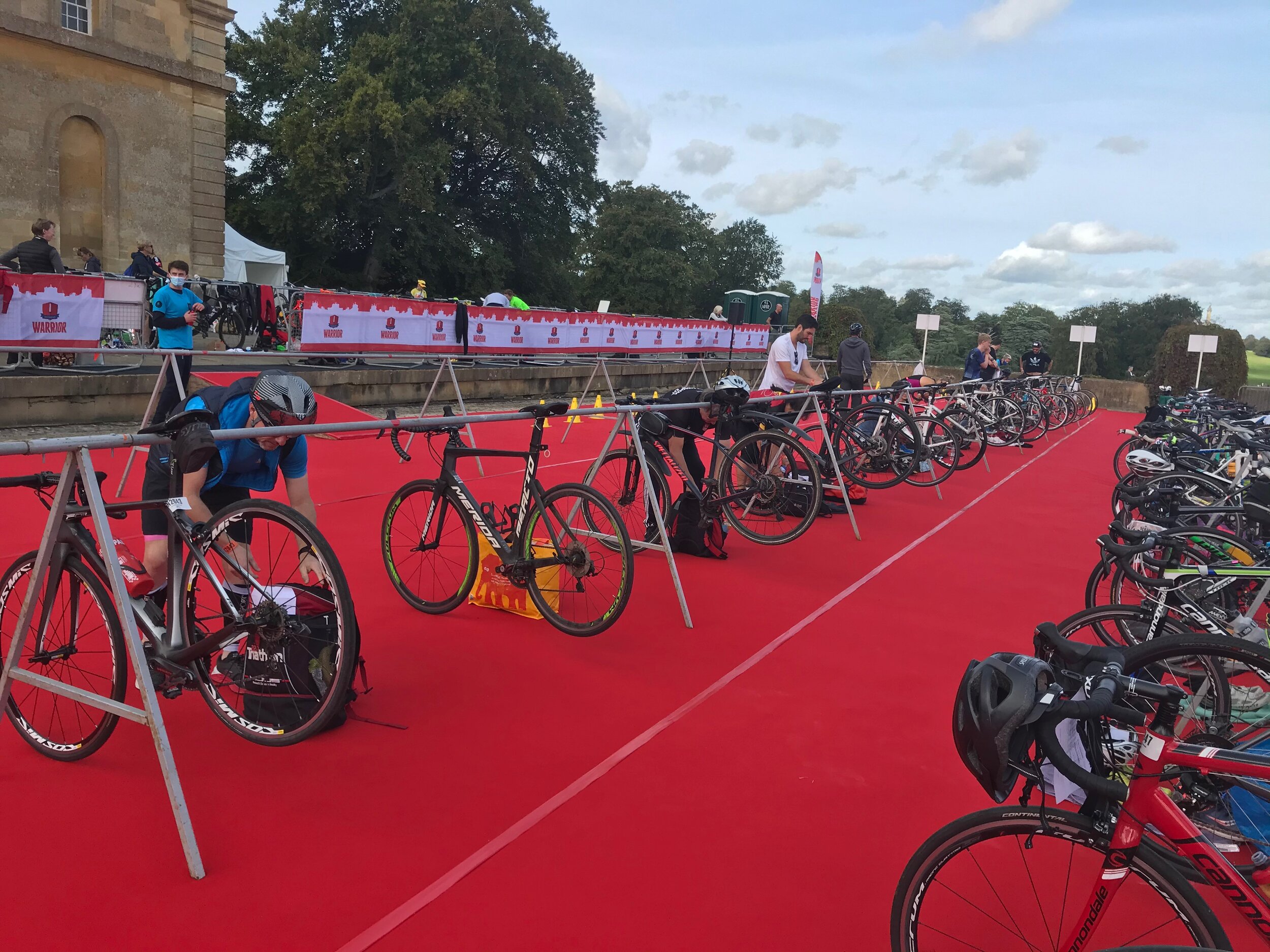
Race Start and Swim
Those of you familiar with any rolling swim start will see no significant difference to normal other than a clear 5-second gap between each starter. Twelve people from each wave were asked to line up (first come first serve basis) and the ‘wave-within-the-wave’ started, and they gathered the next group.
Though there was a mix of abilities and there were clearly small bunches in the swim leg, these soon separated out and from what you could see from the side of the lake it looked like a very open swim. This was matched at the swim exit where even where a relatively large swimming group (four people) came in almost together, you could see that they separated quickly on the land and even then, they were not completely together.
Below are some images so you can see what it looks like.
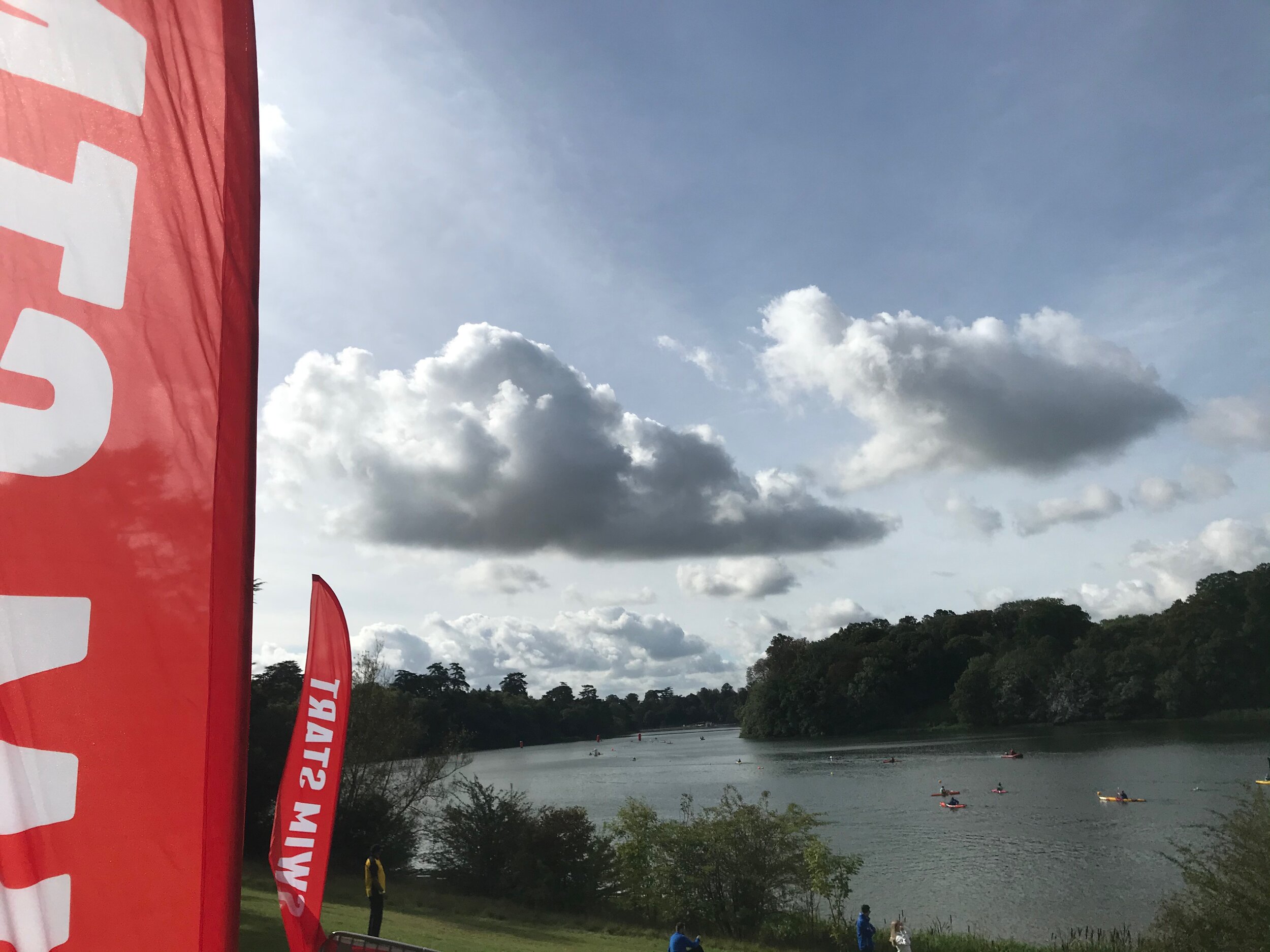
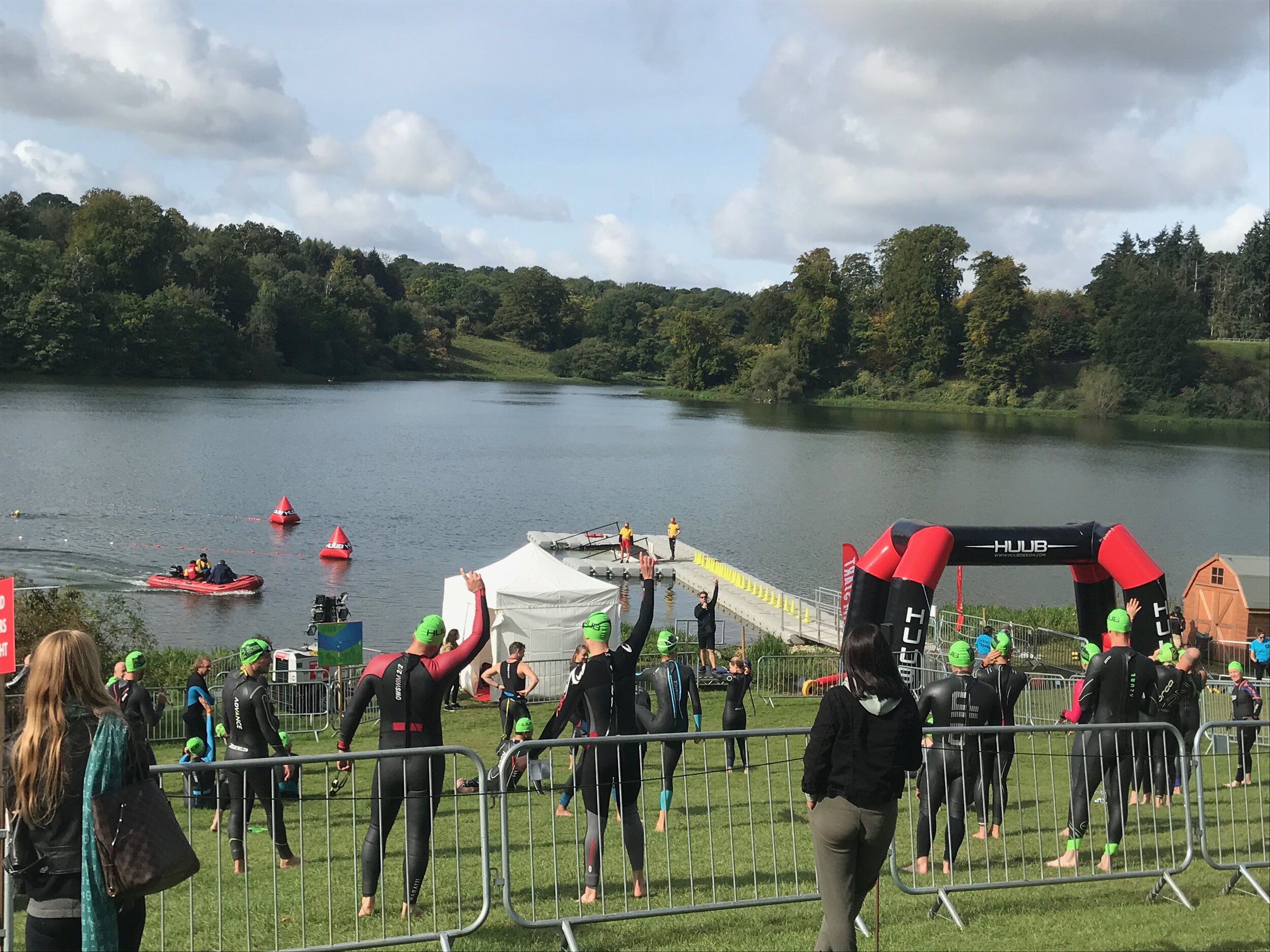
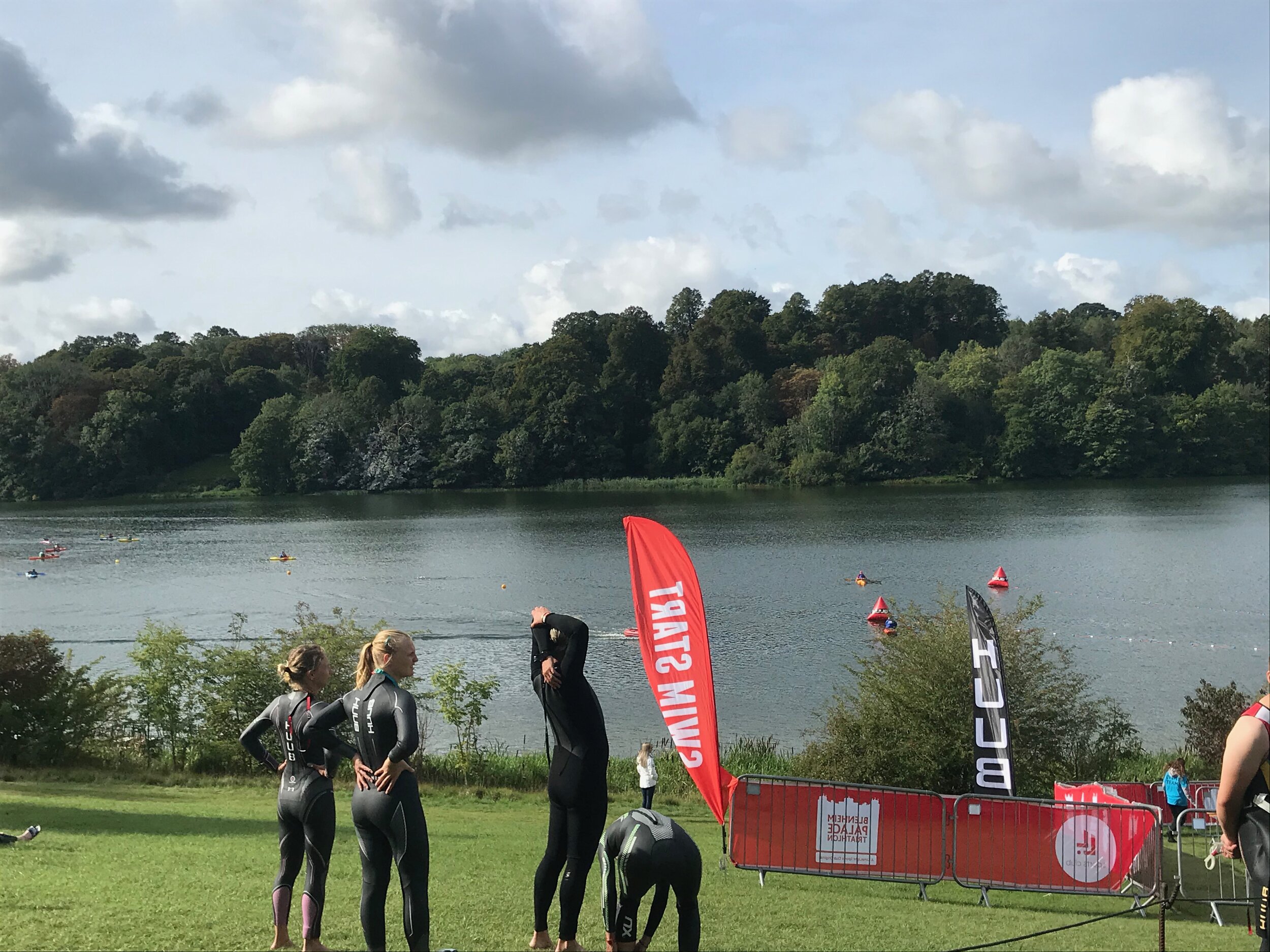
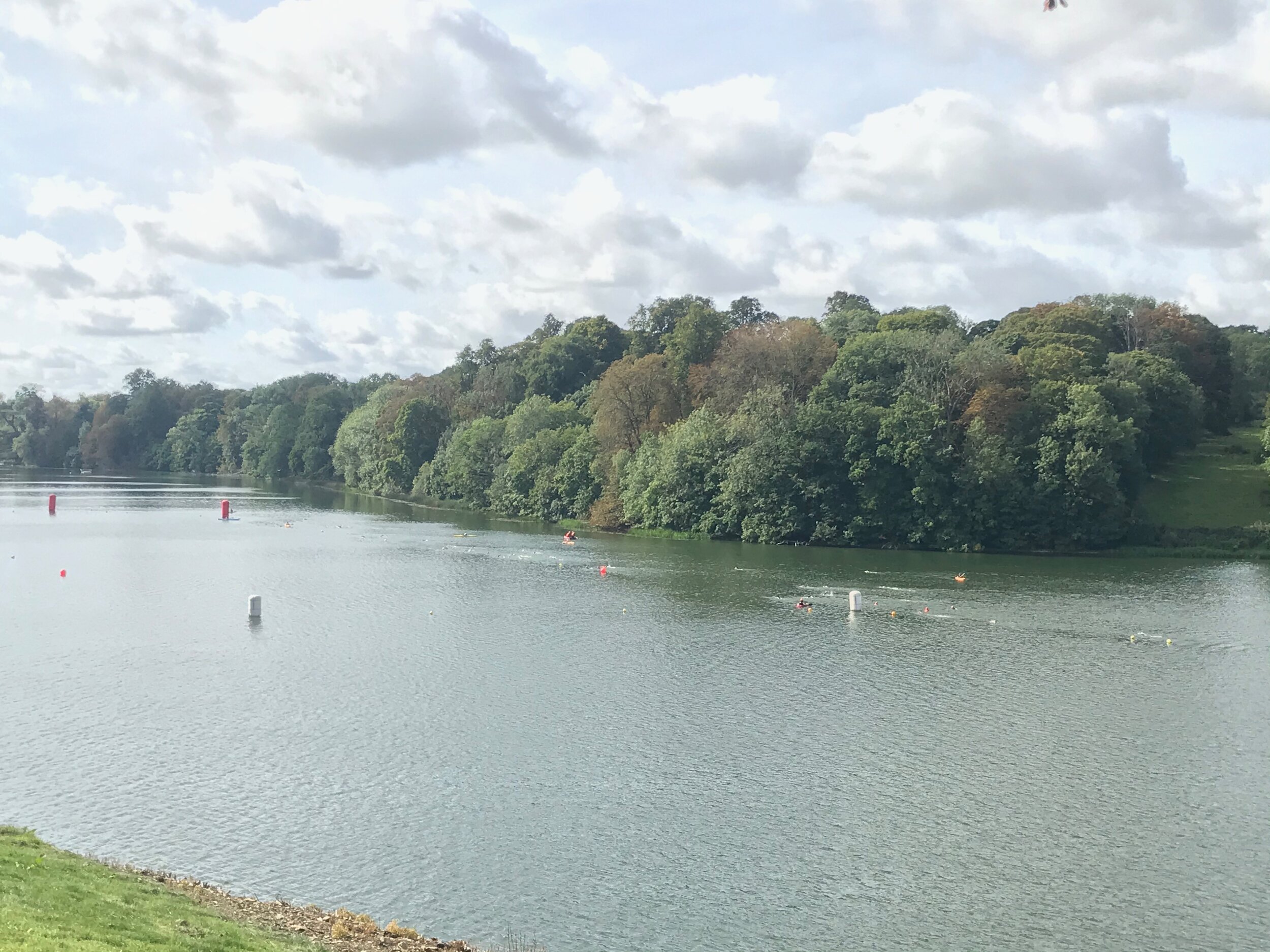
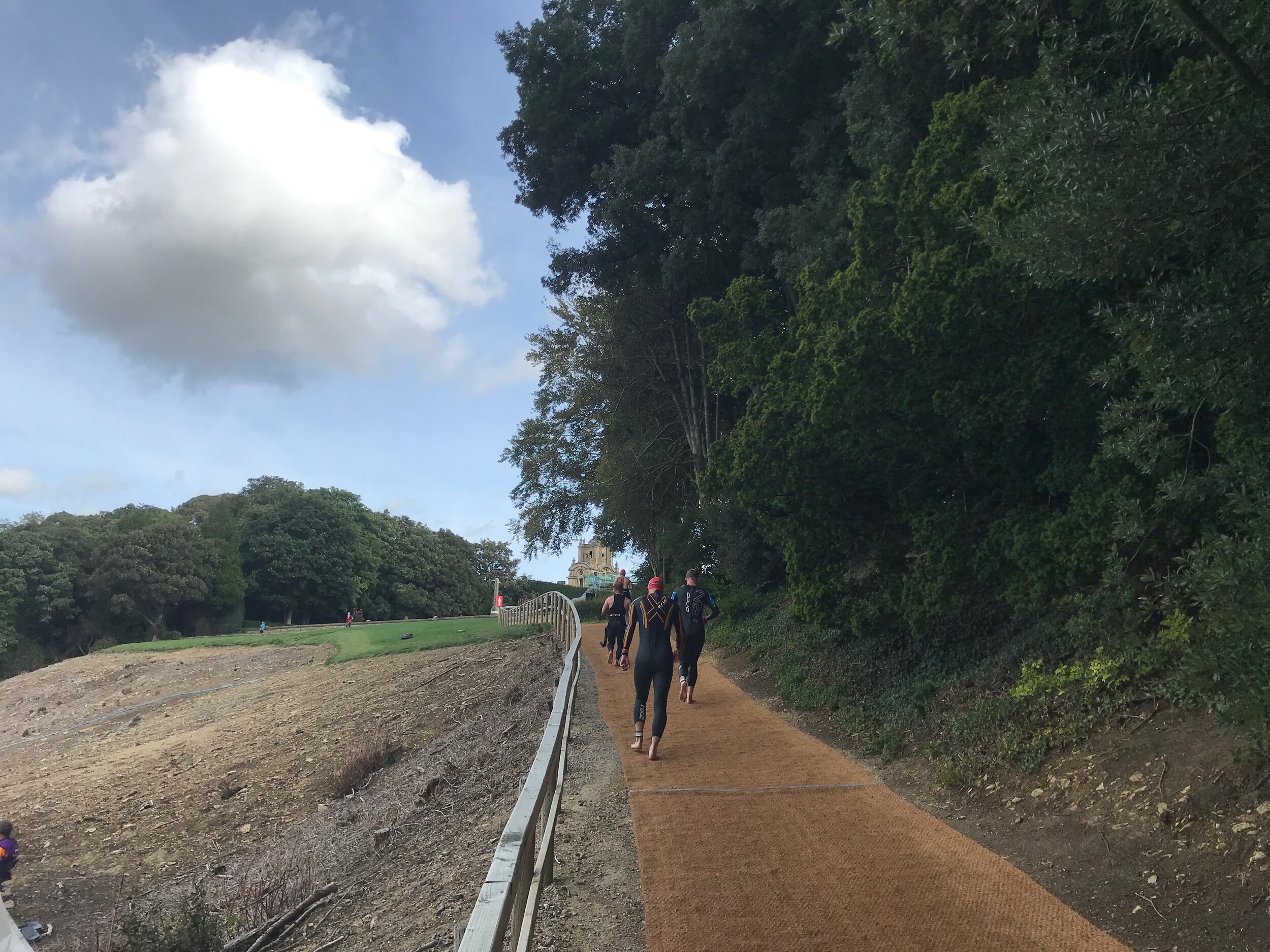
Bike and Run
The bike and runs operated fairly normally and there were undoubtedly people racing. Still, there was also an awareness or almost polite approach to racing with people mindful of entering the 2m bubbles. The route seemed empty, though. The event was operating at about 50% capacity, but even if you double the number of people you could see at one time, it would still come across as a quiet event which has to be down to the organisation of the waves and the wave starts.
Below are some images so you can see what it looks like.
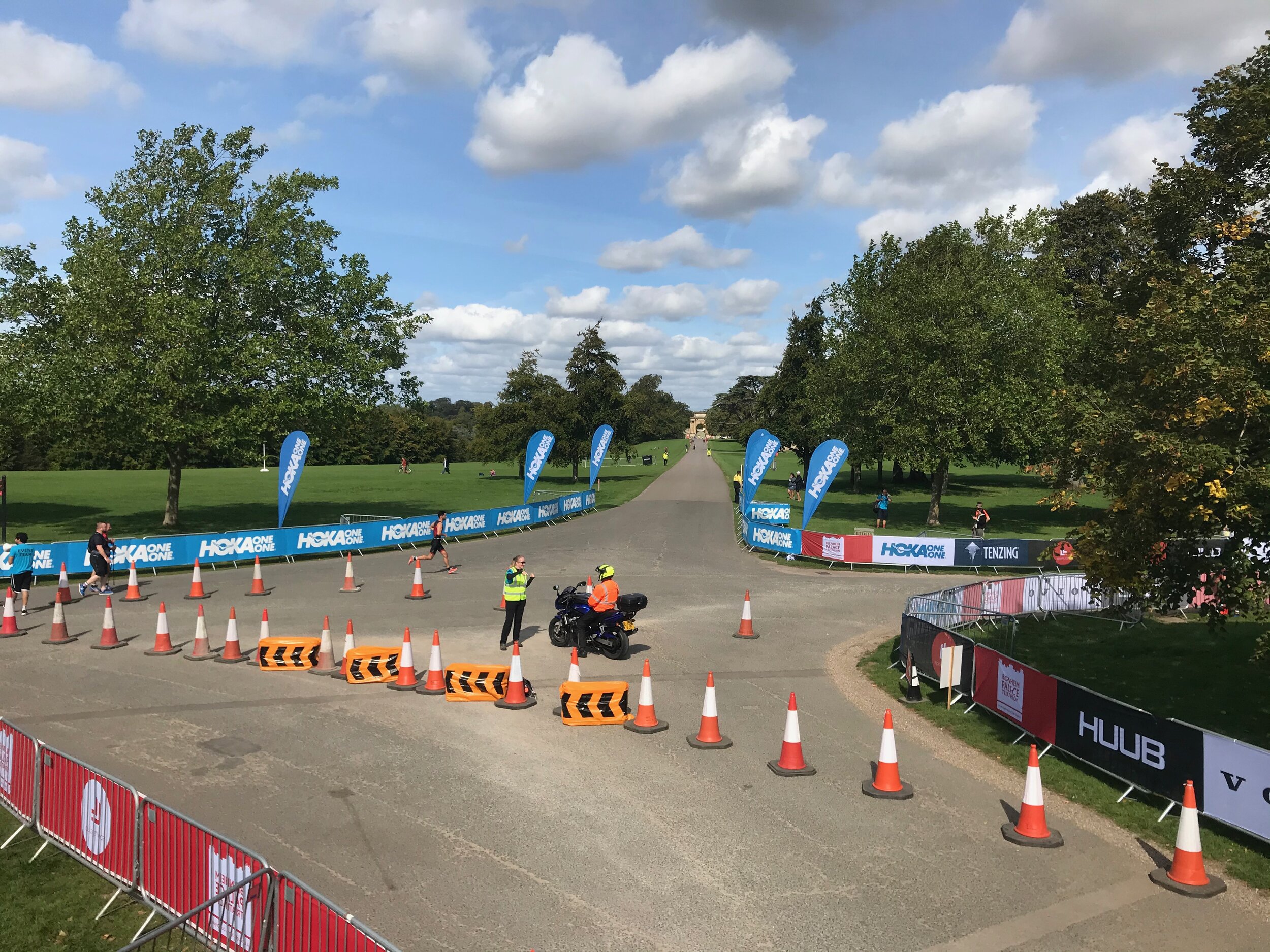
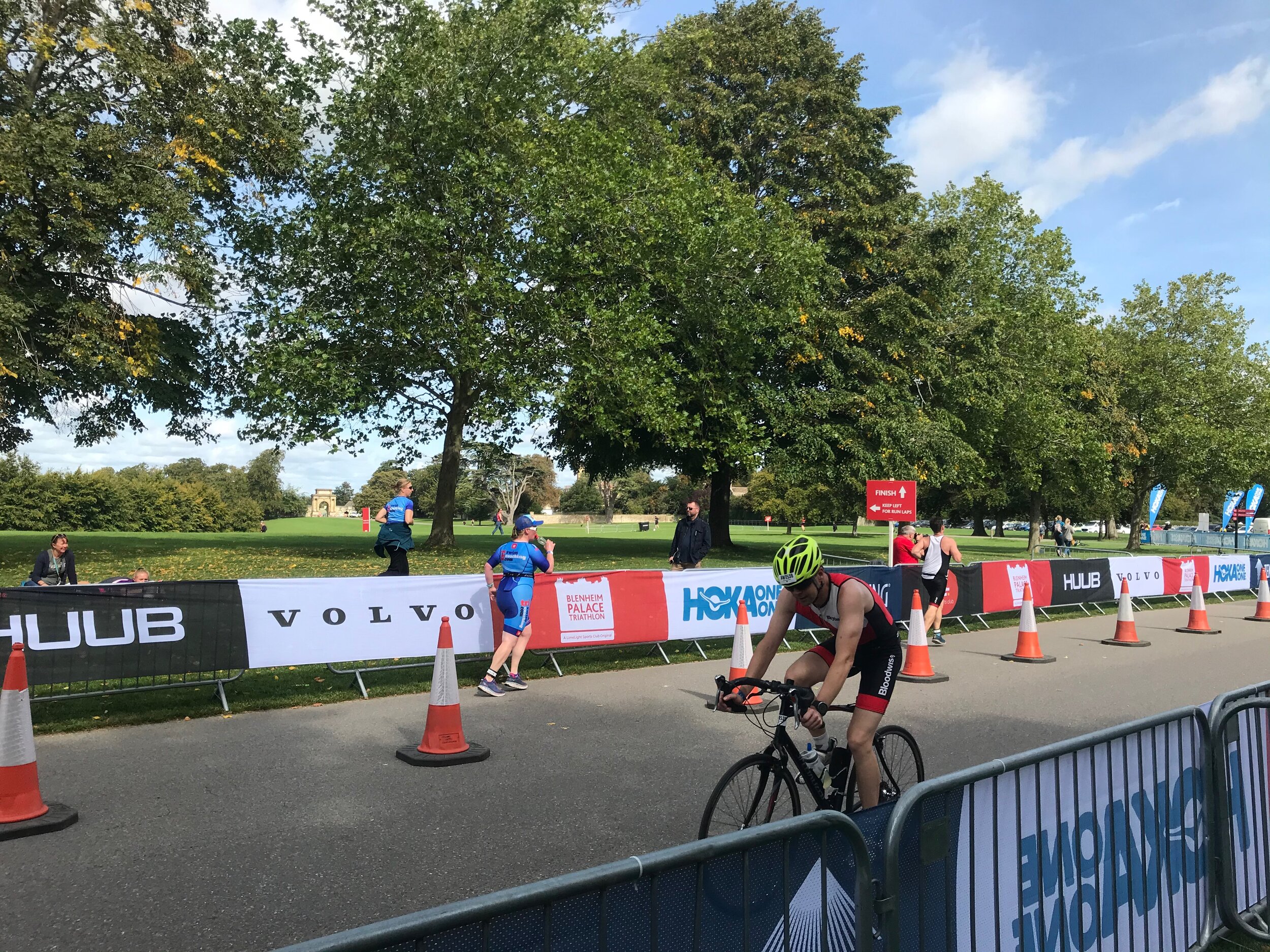
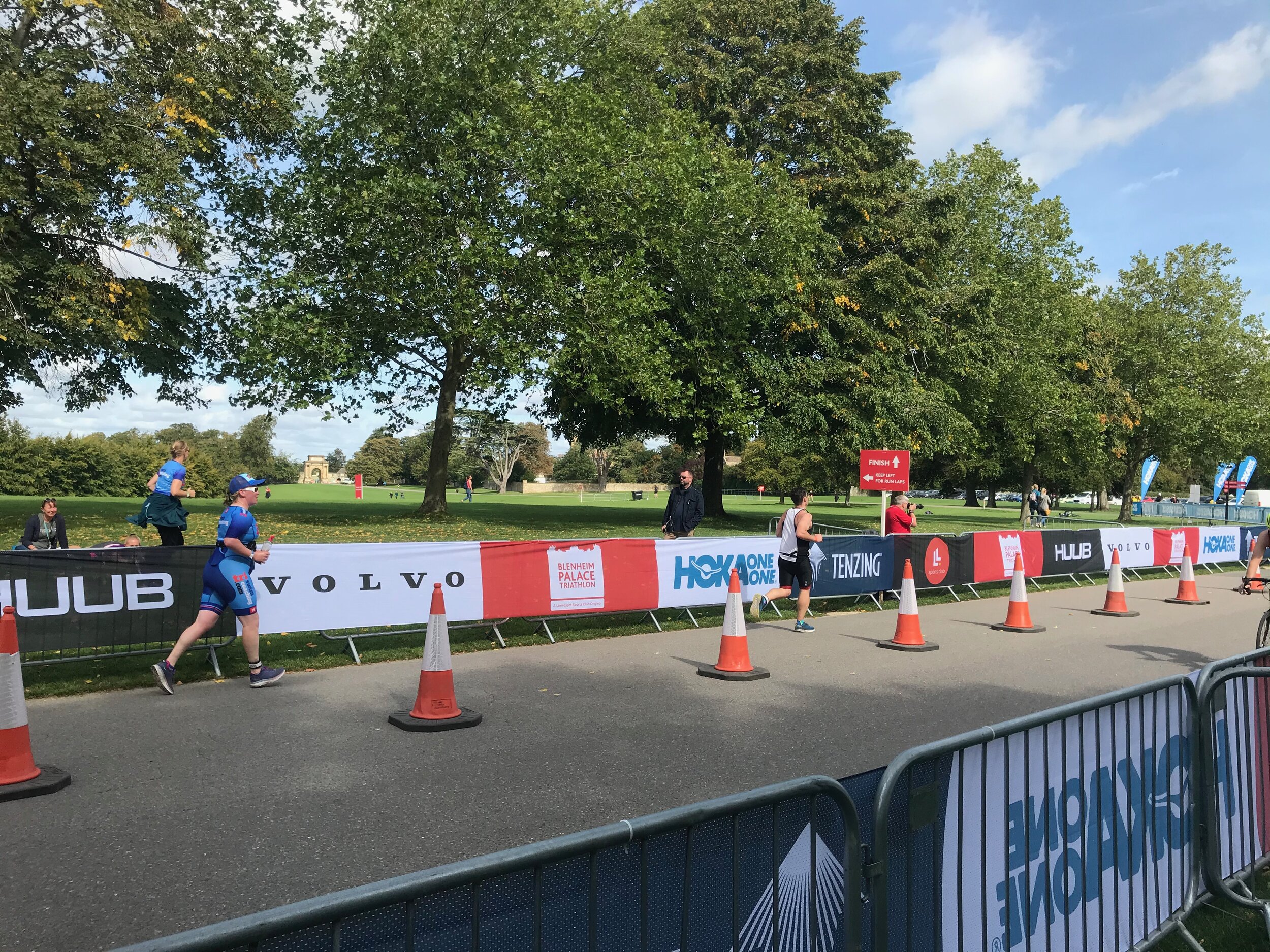
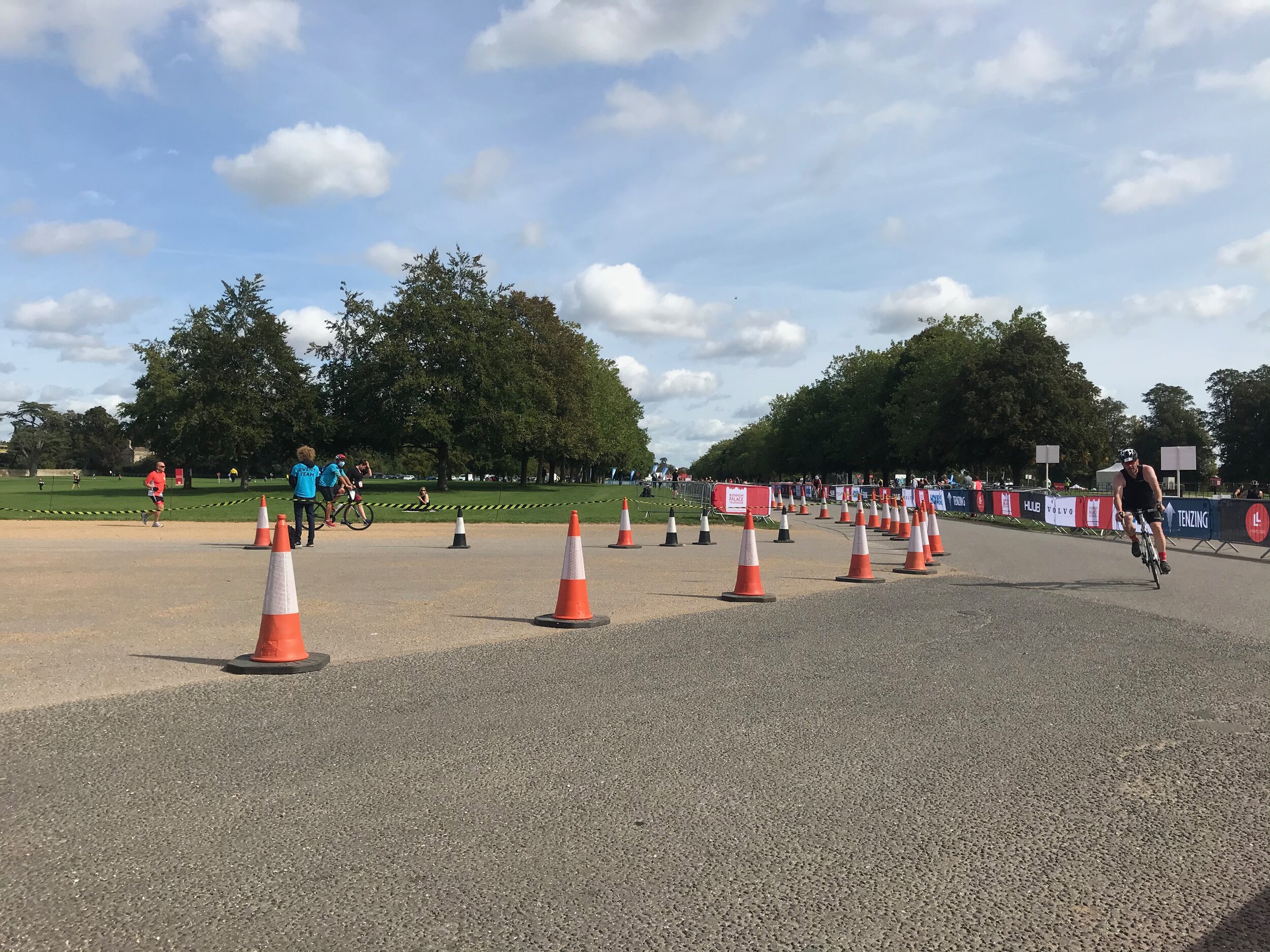
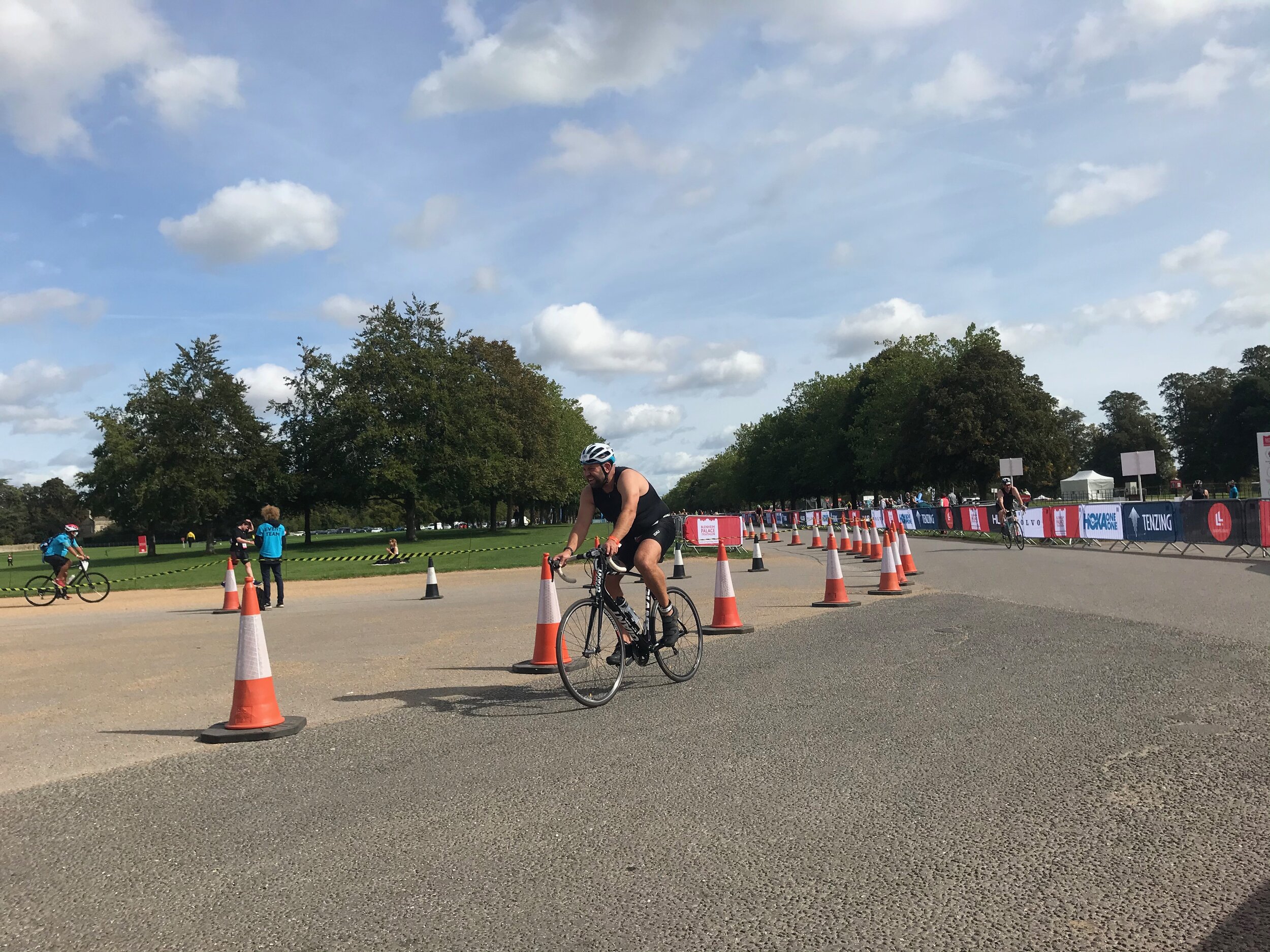
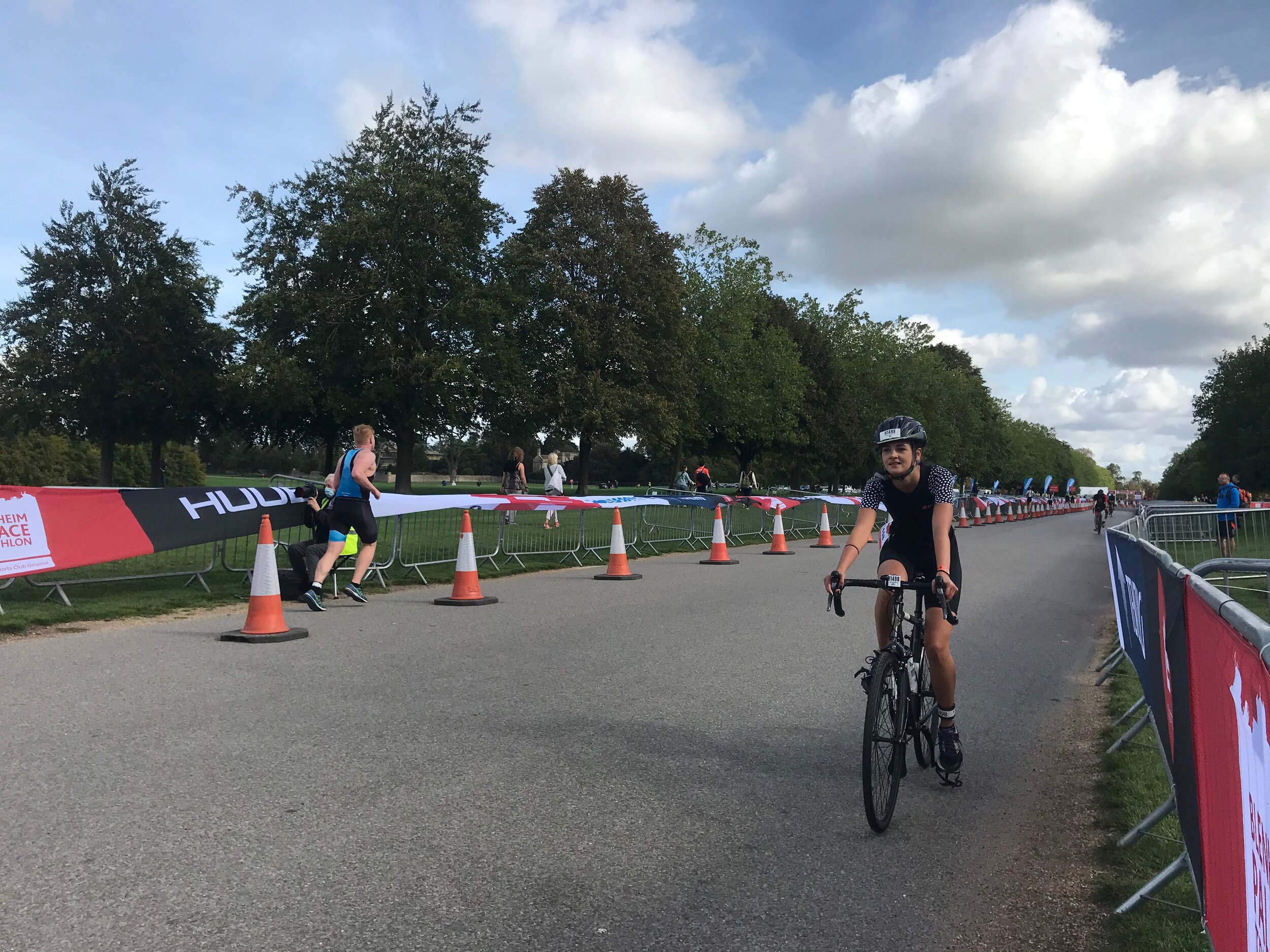
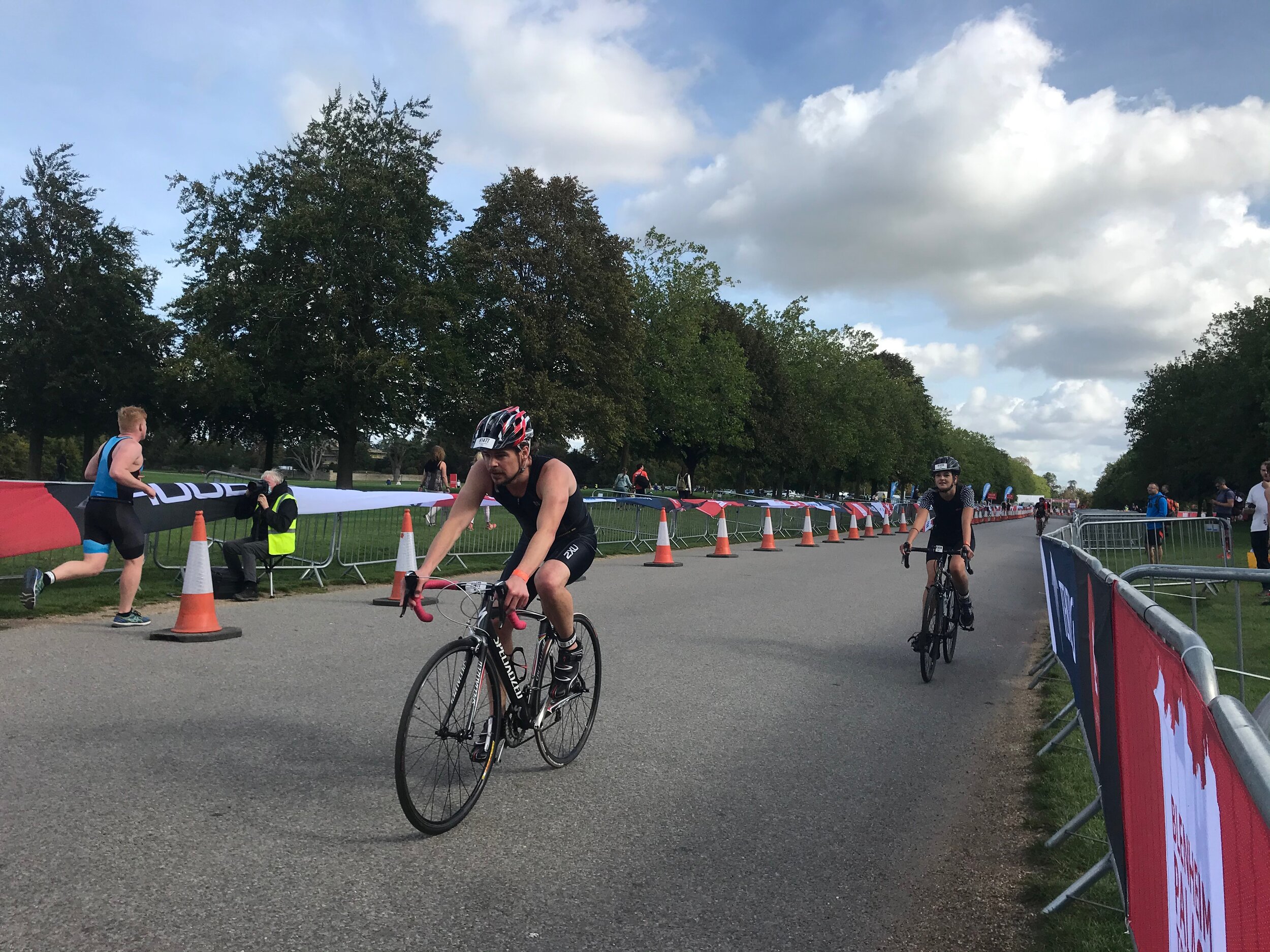
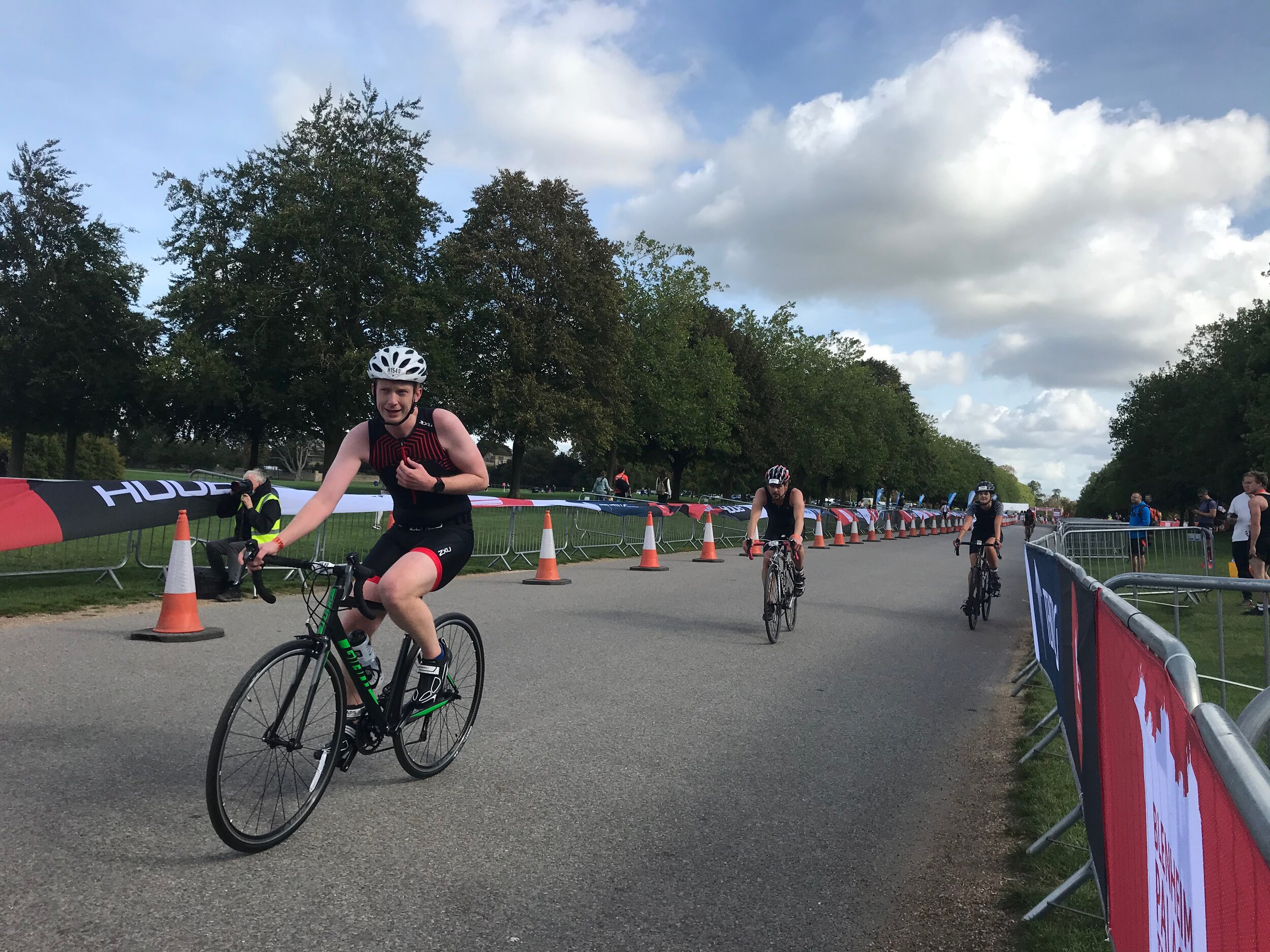
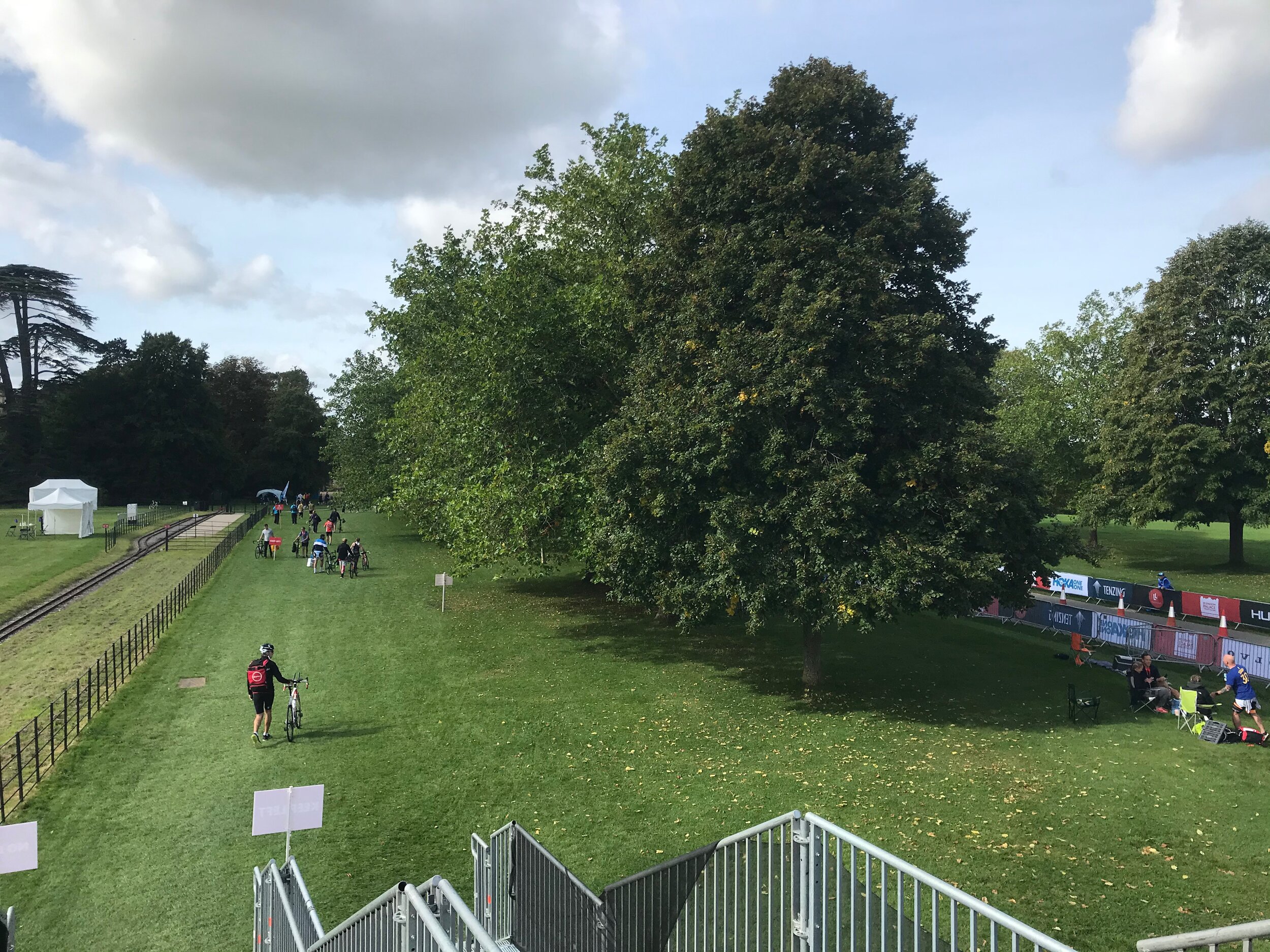
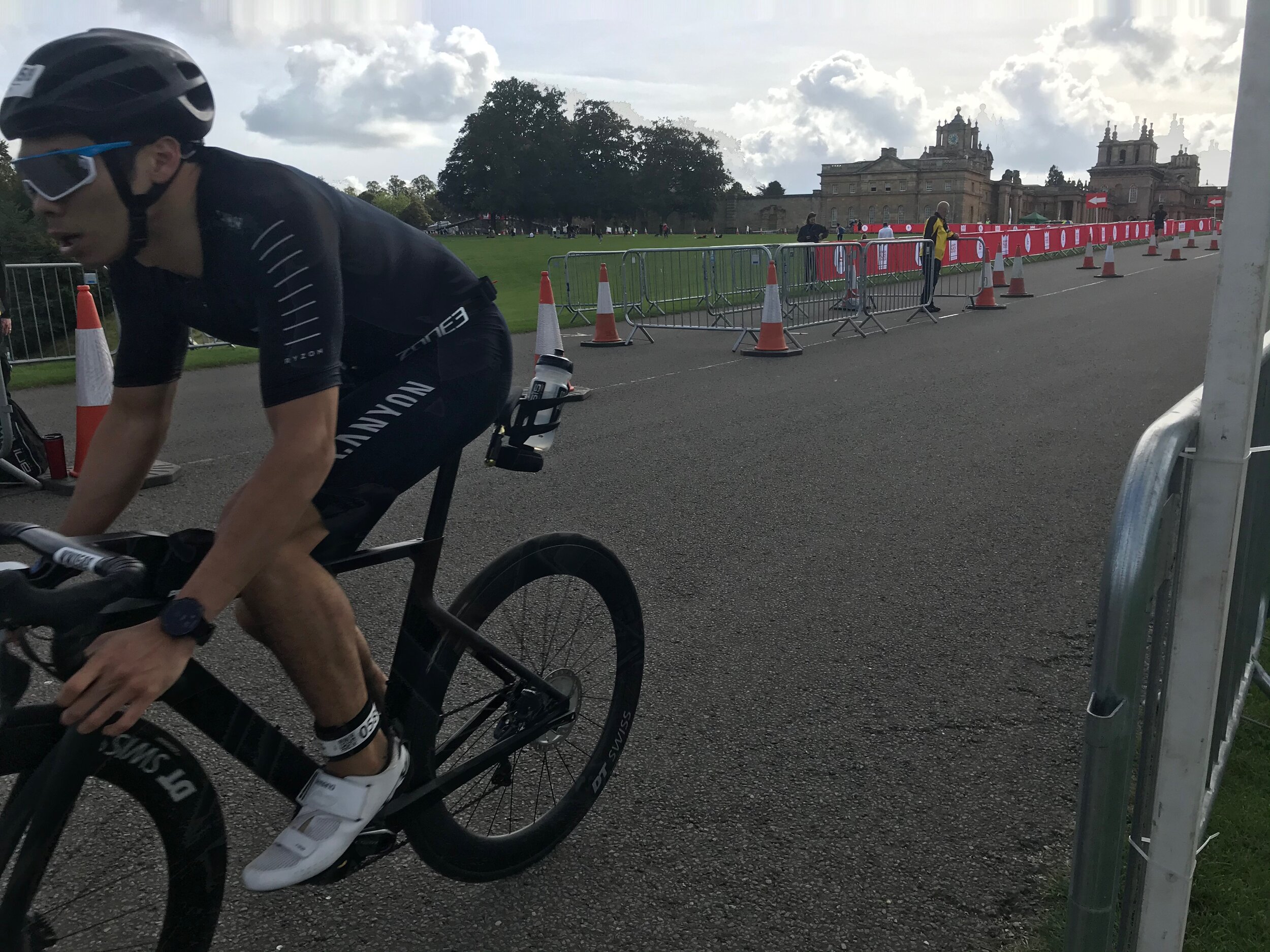

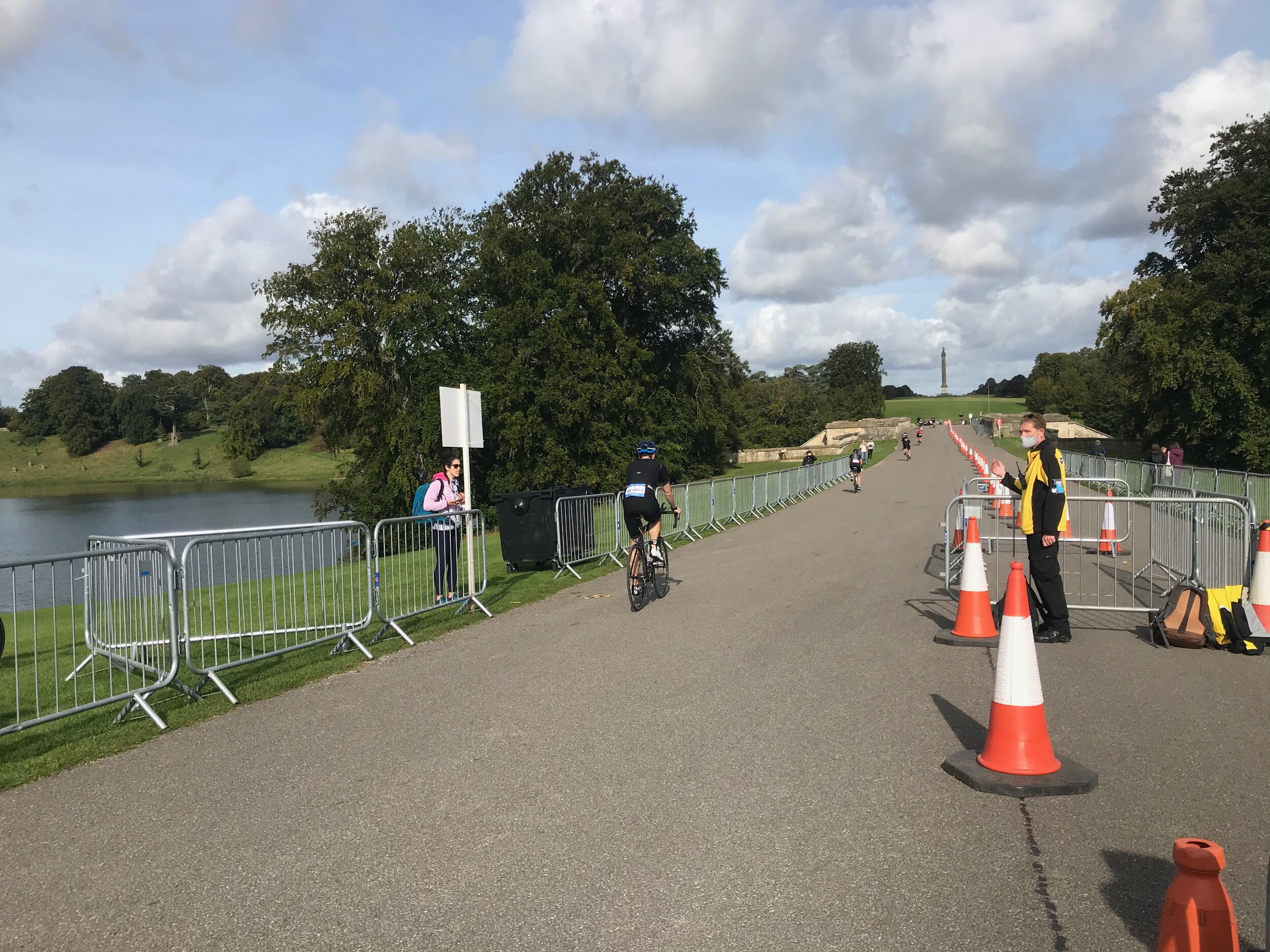
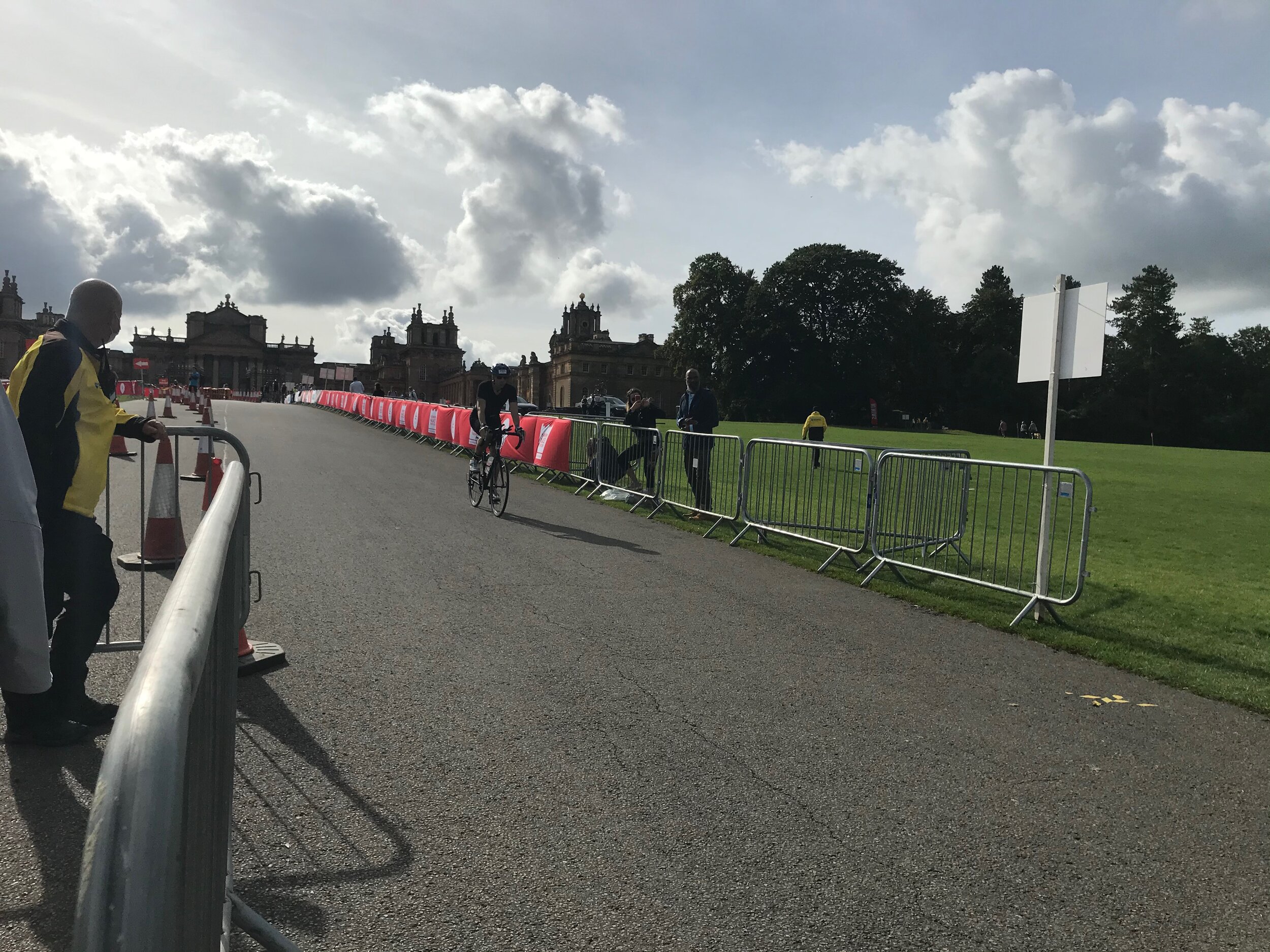
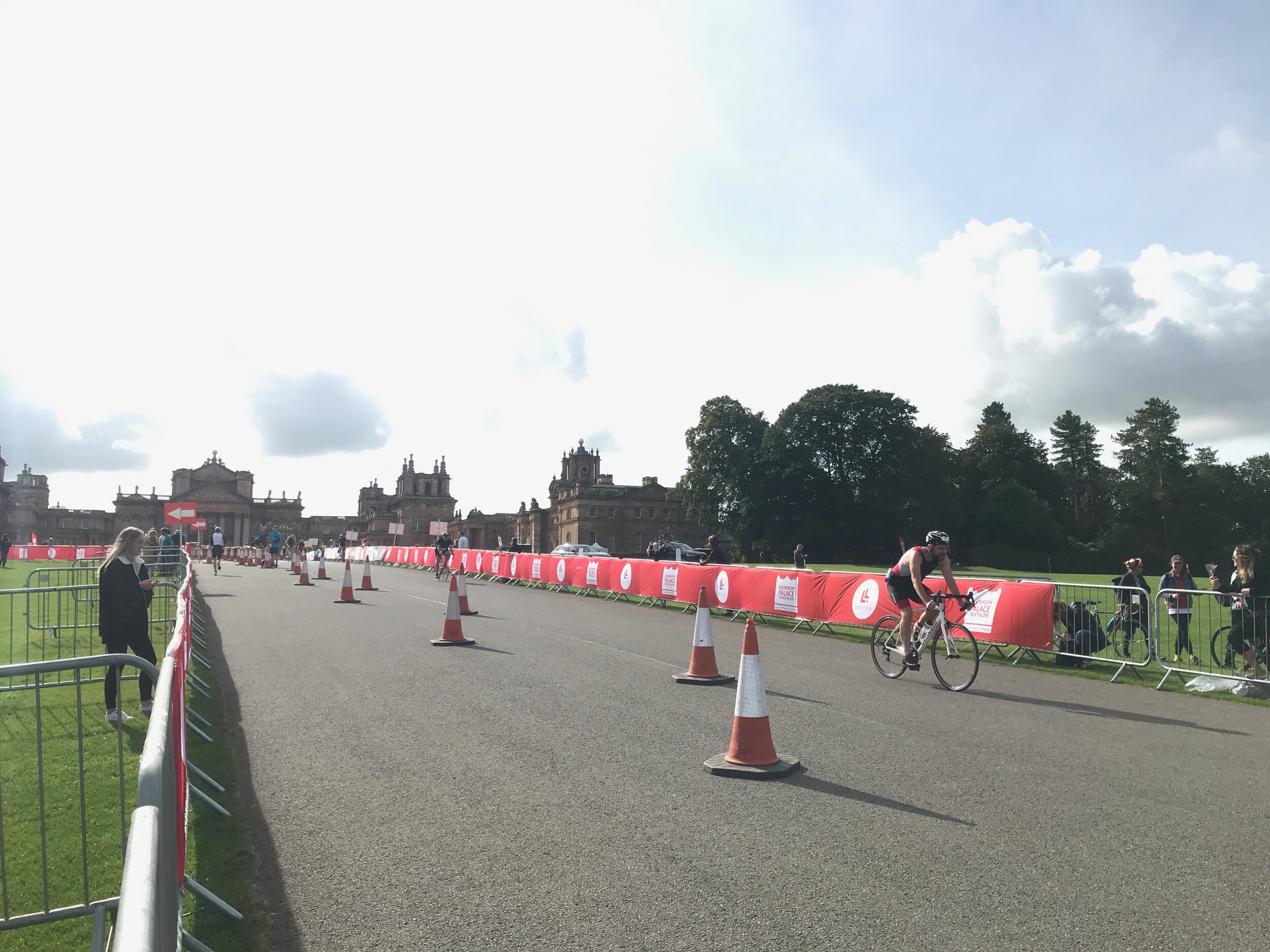
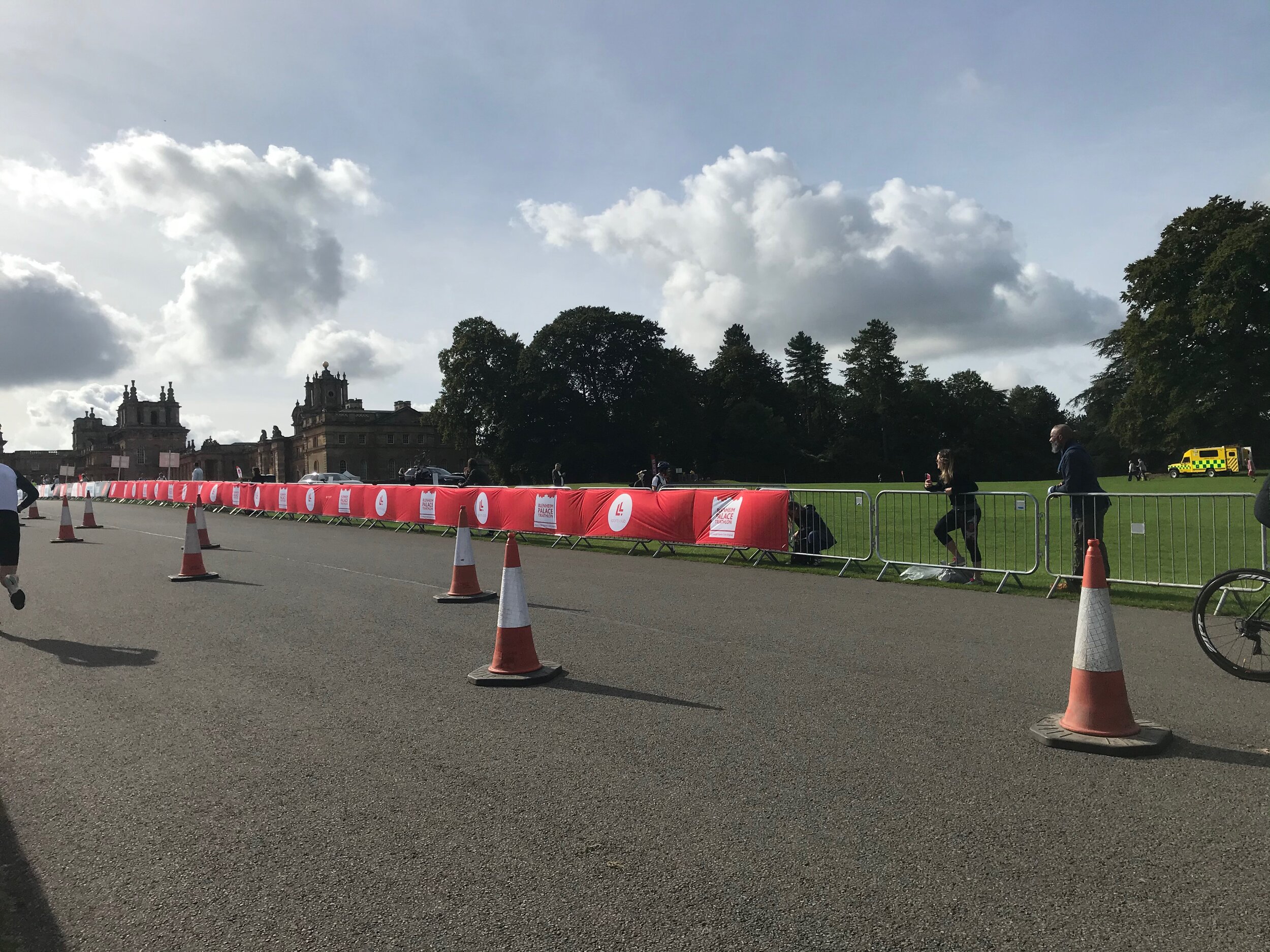
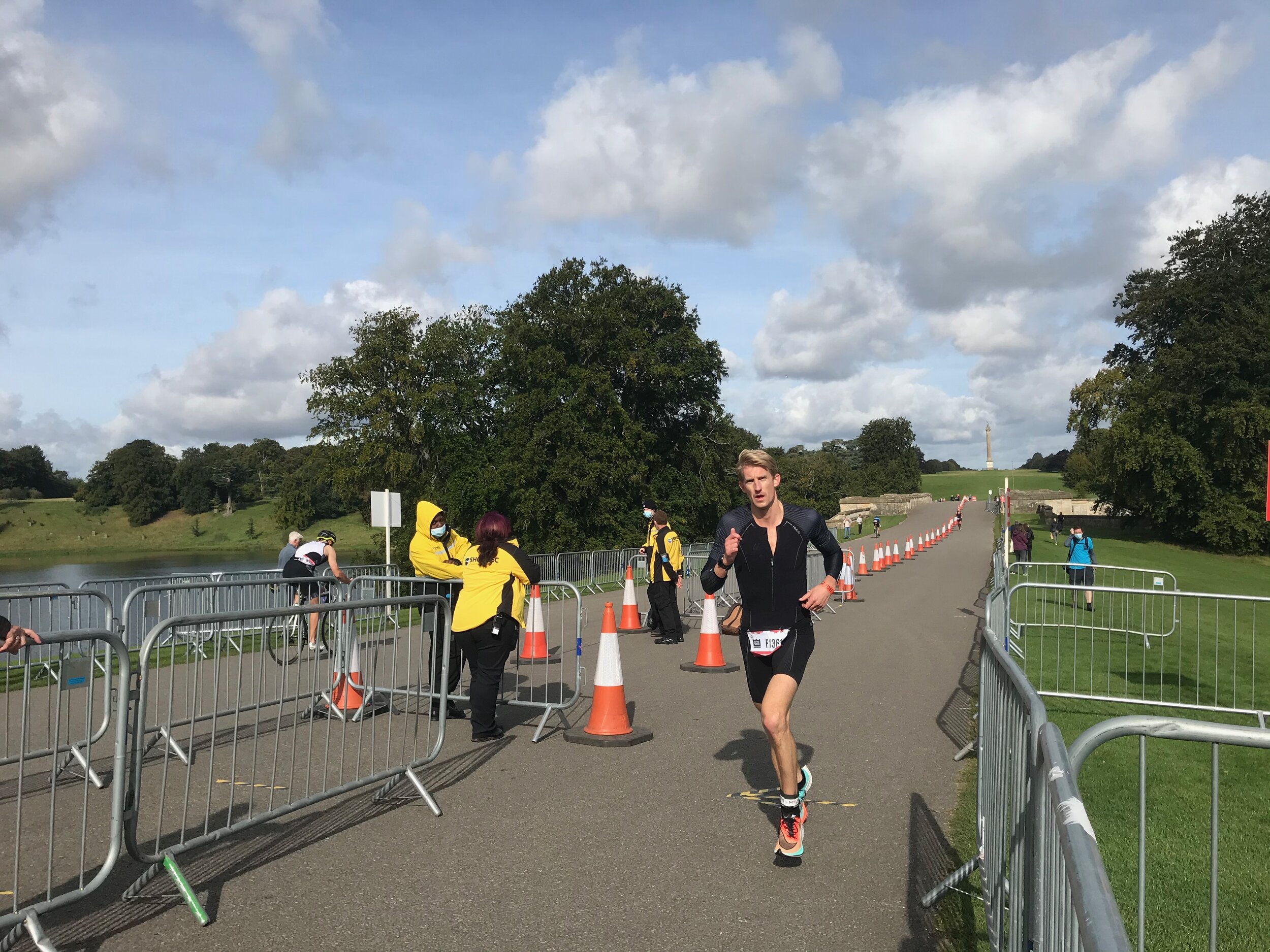
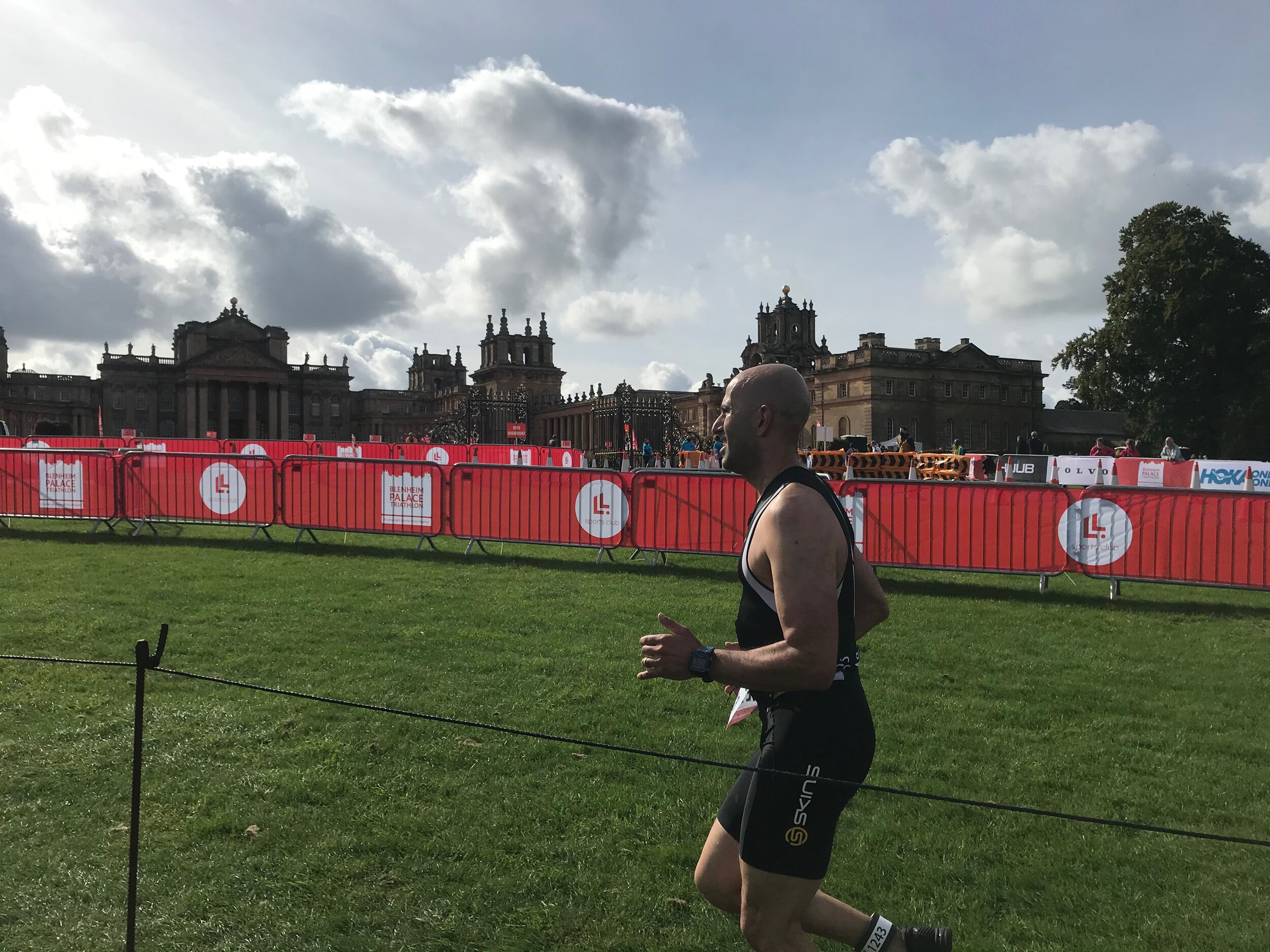
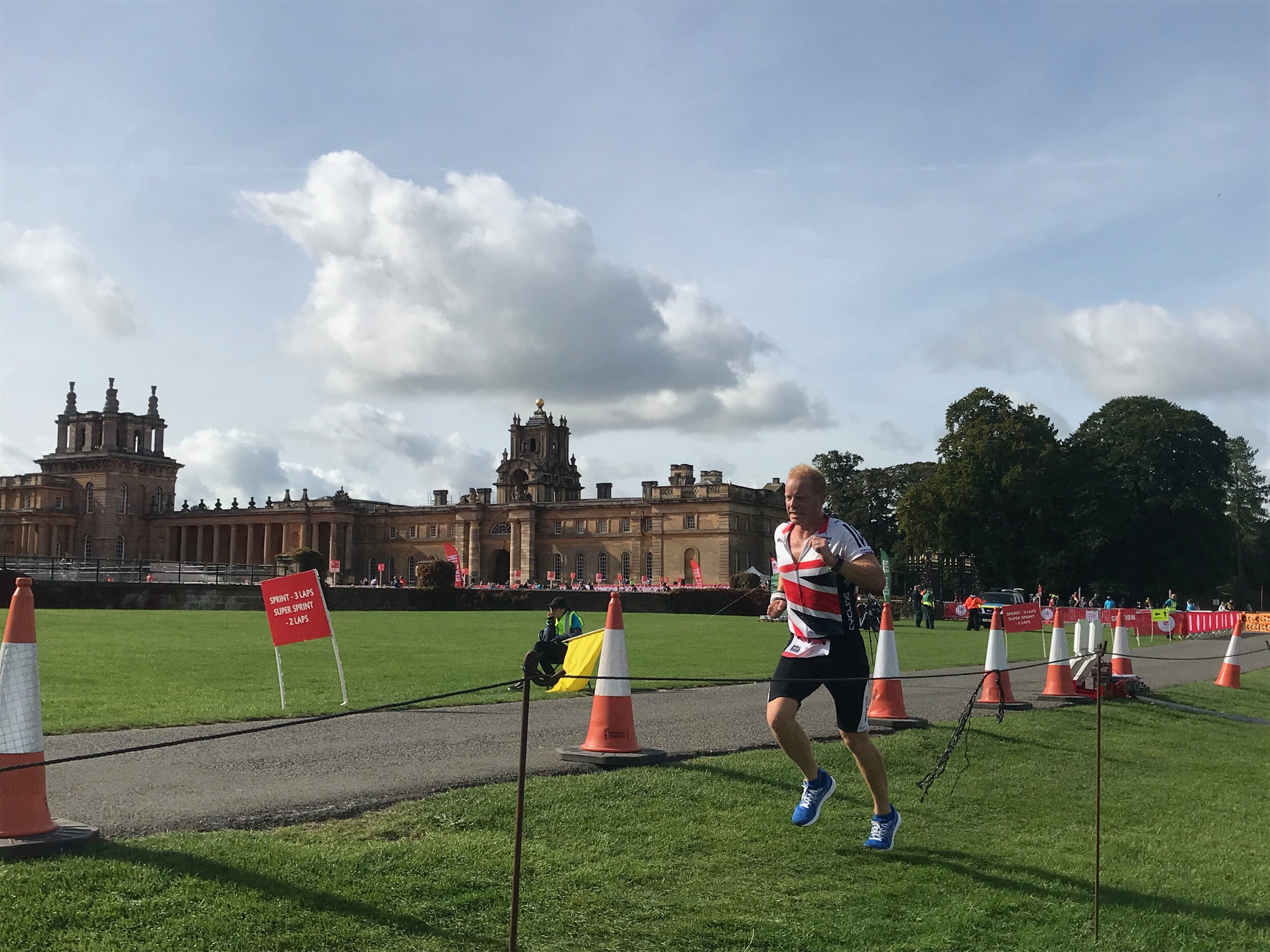
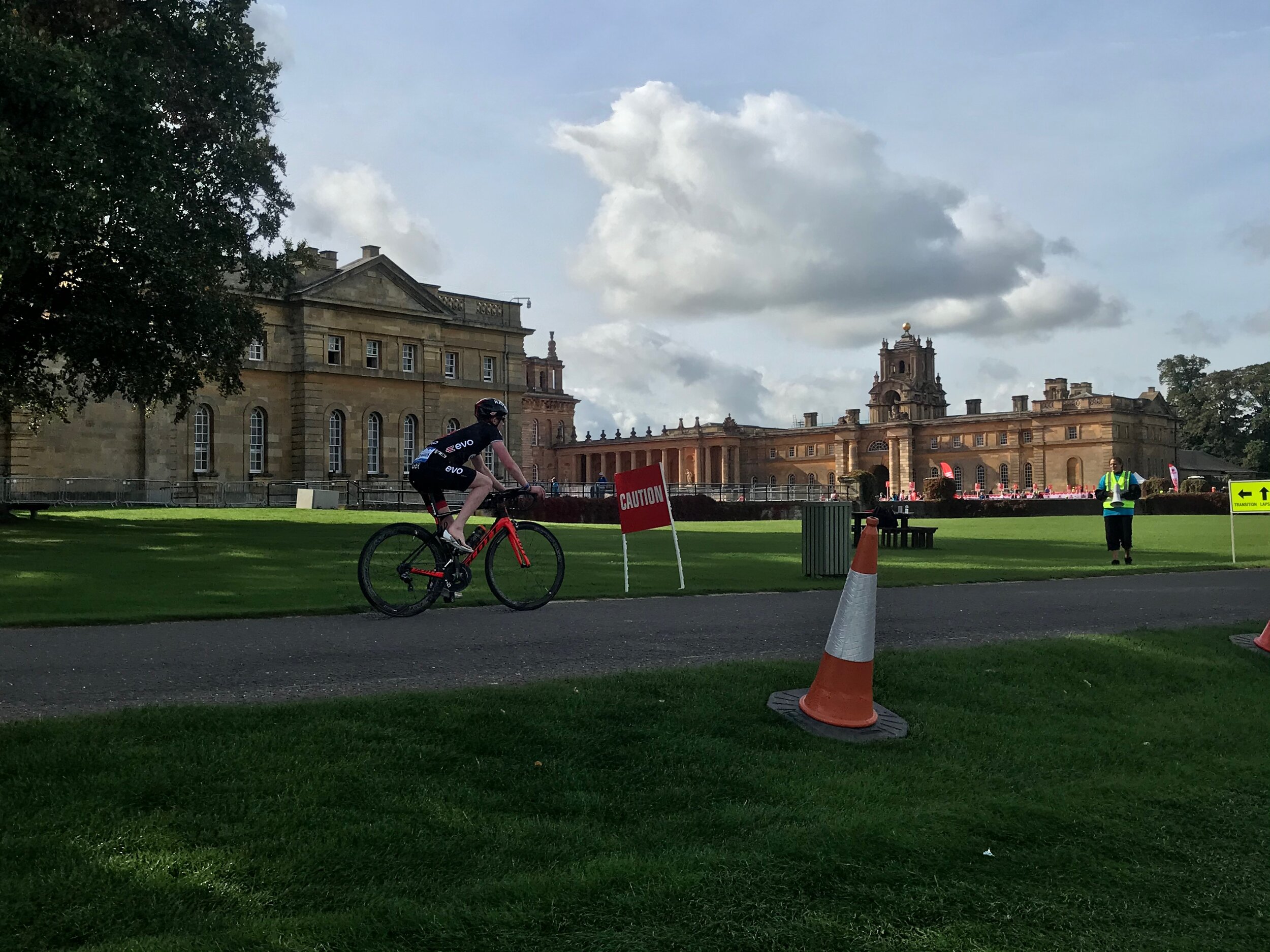
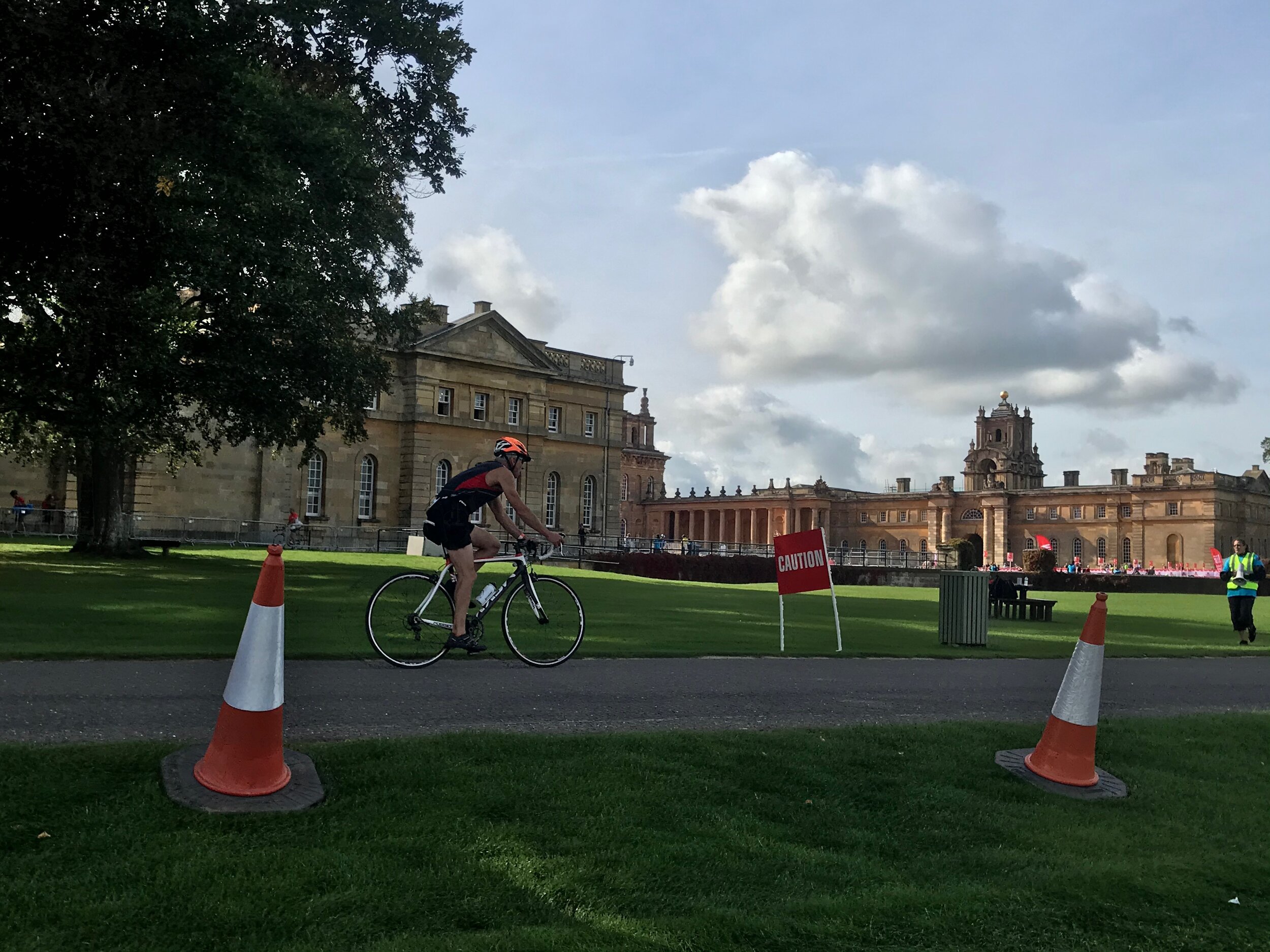
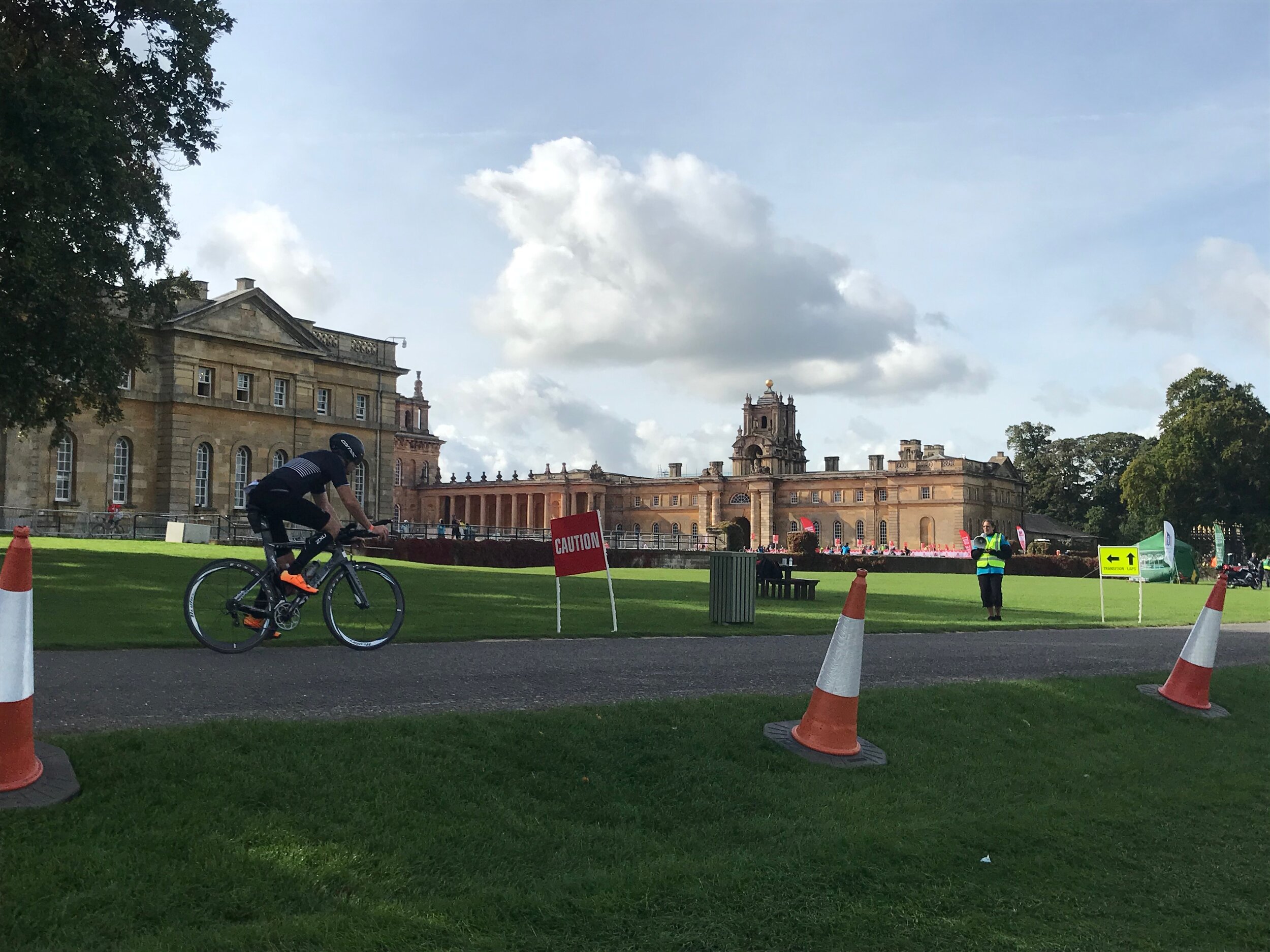
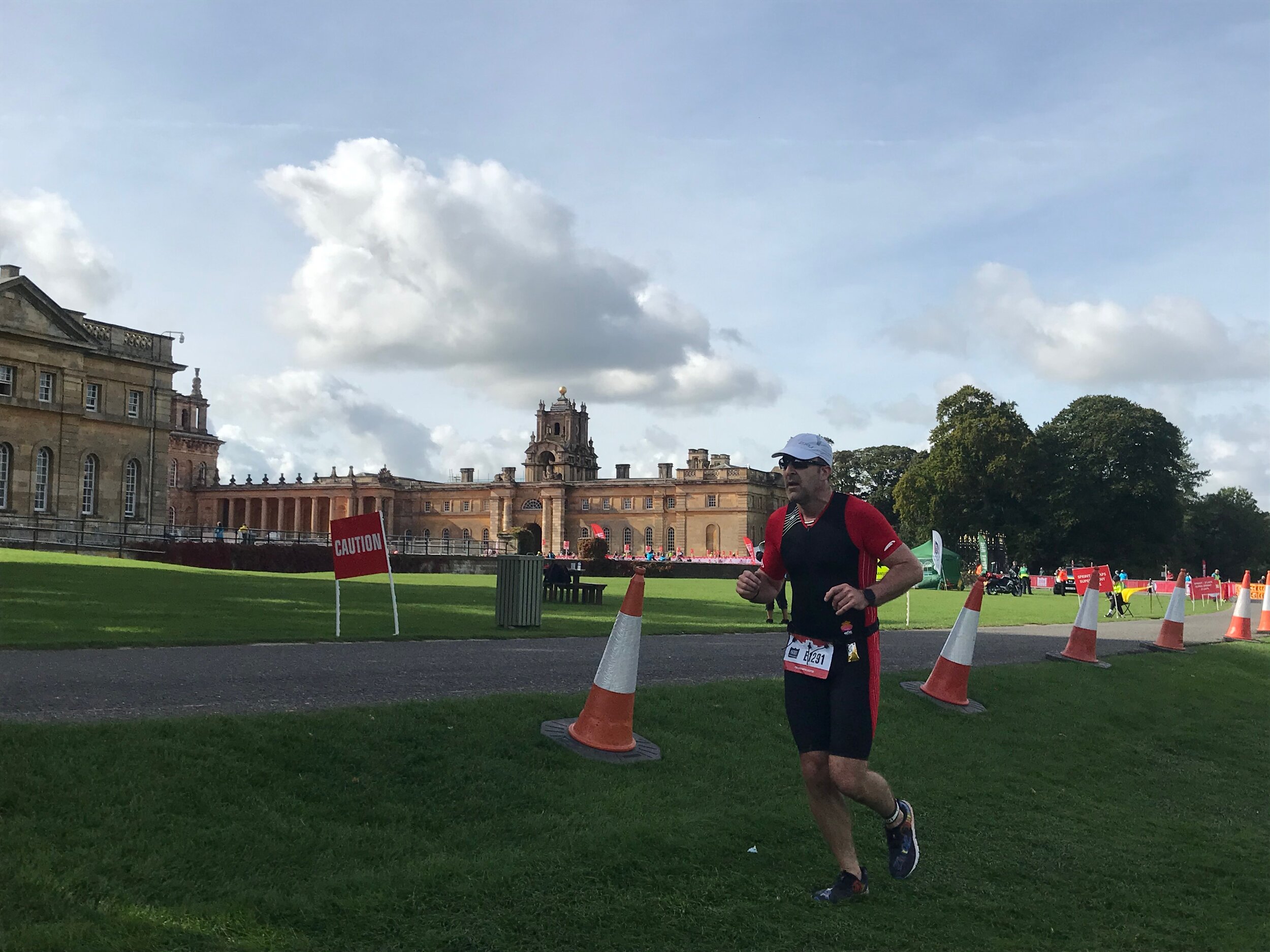
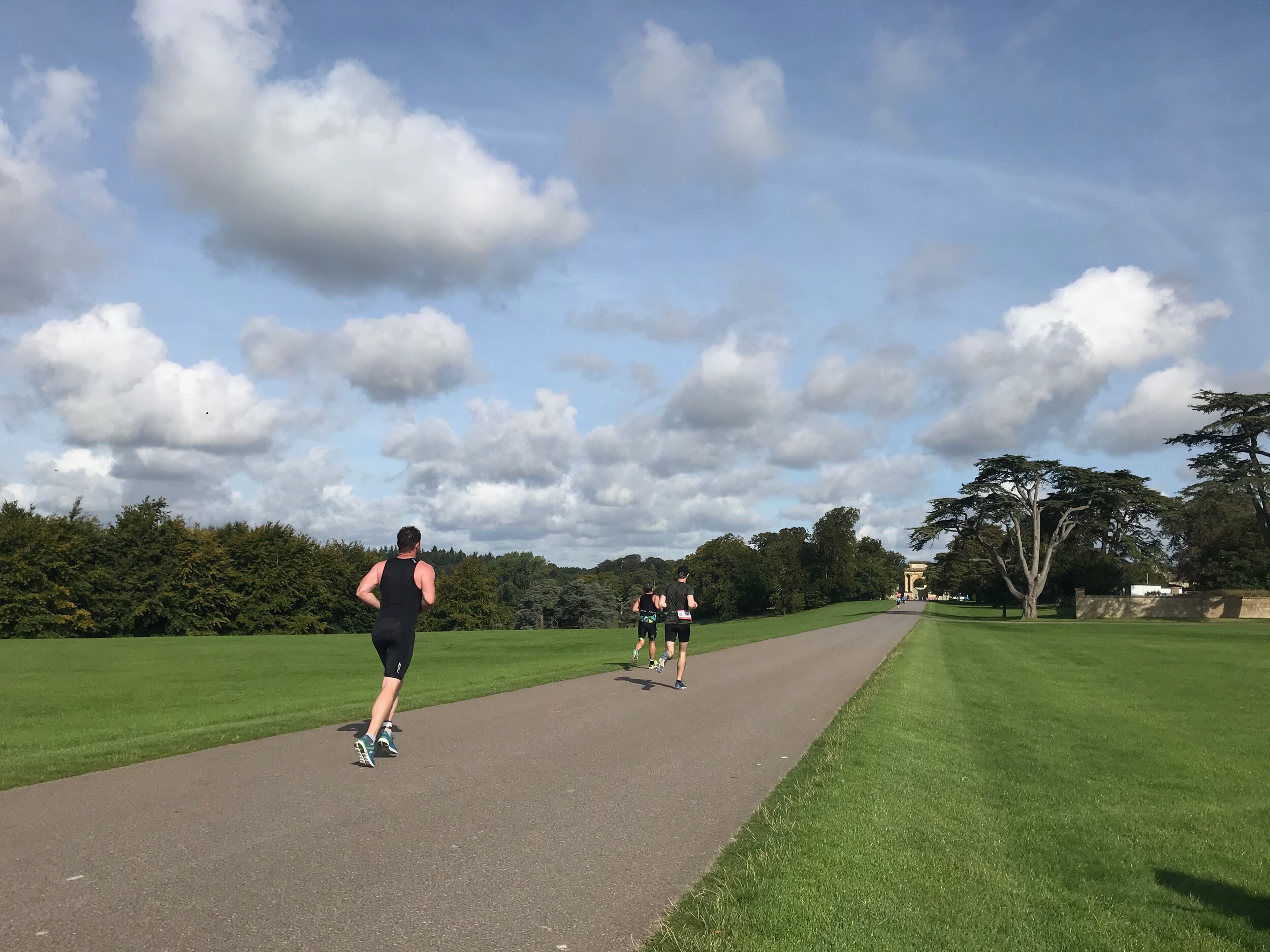
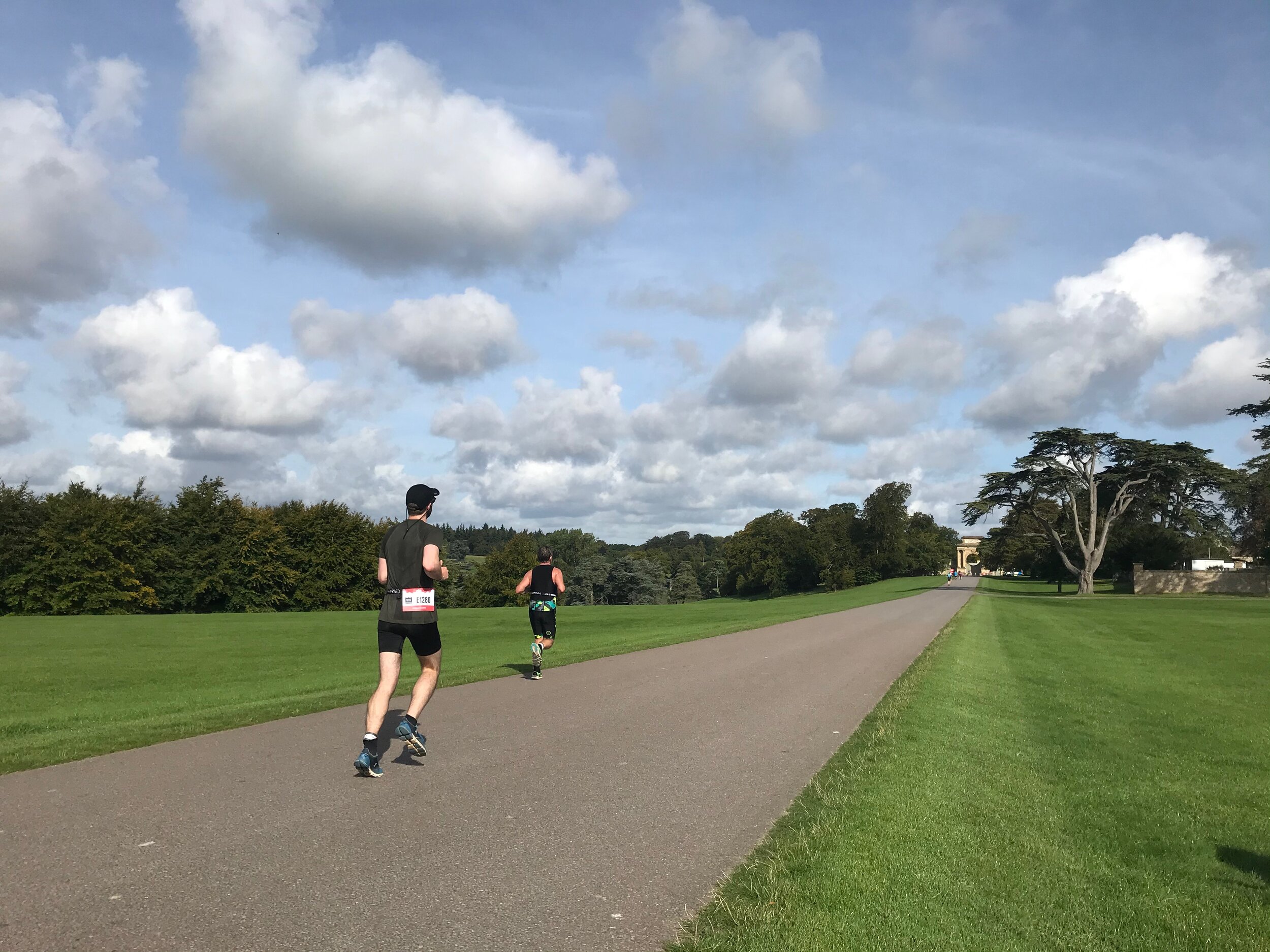
Finish line
The finish line was hushed. There was perhaps one athlete finishing every 20s or so when I was standing there. Participants were asked to move off the finish line fairly quickly and then stay on-site for as long as was necessary but no longer than that to reduce the footprint on site. Though a few people were standing around (with some people hopefully congregating in house bubbles), there was a very open feeling to the venue. The finish line was relatively empty given the number of competitors. This is undoubtedly due to the starting times being spread out.
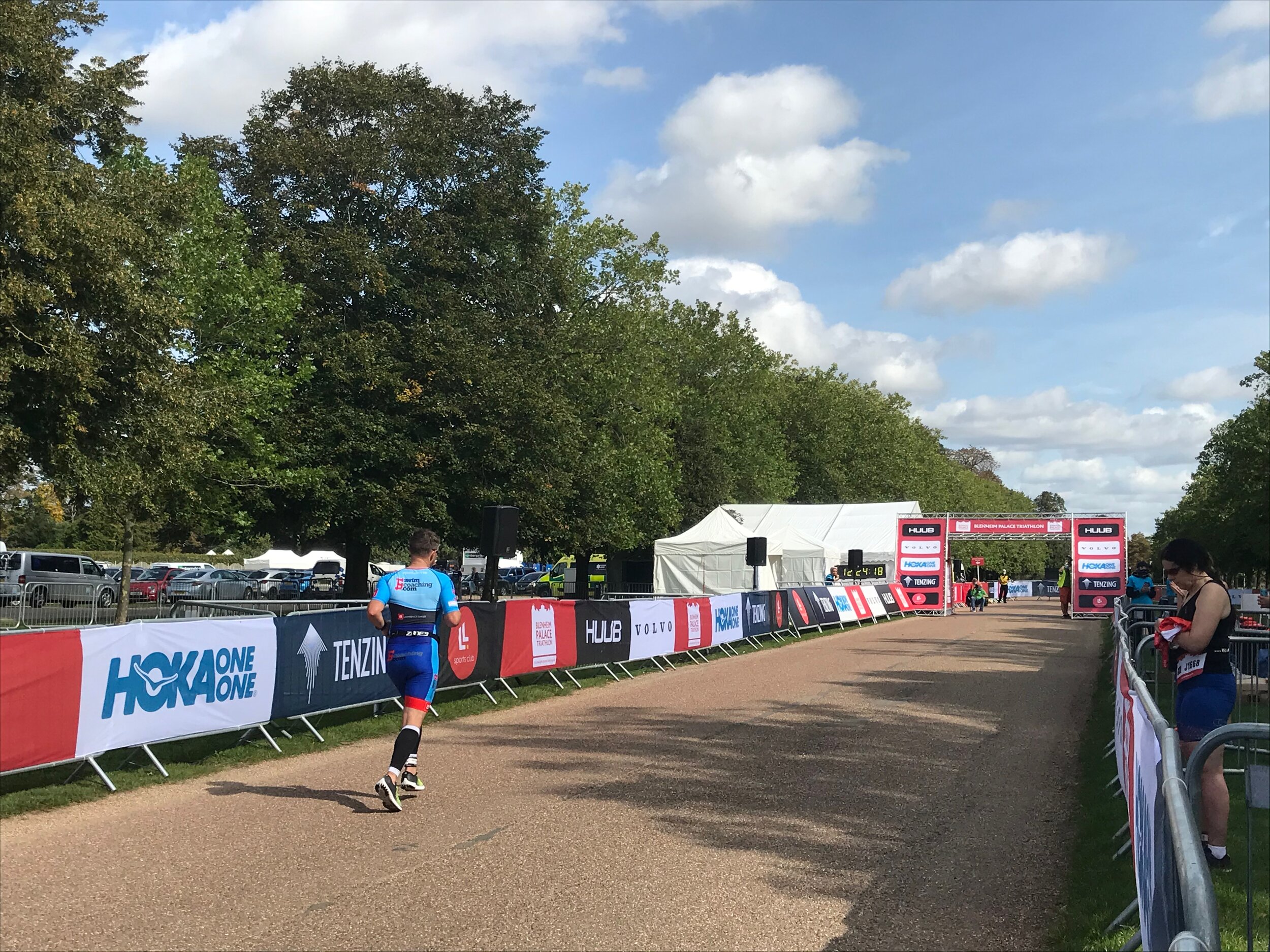
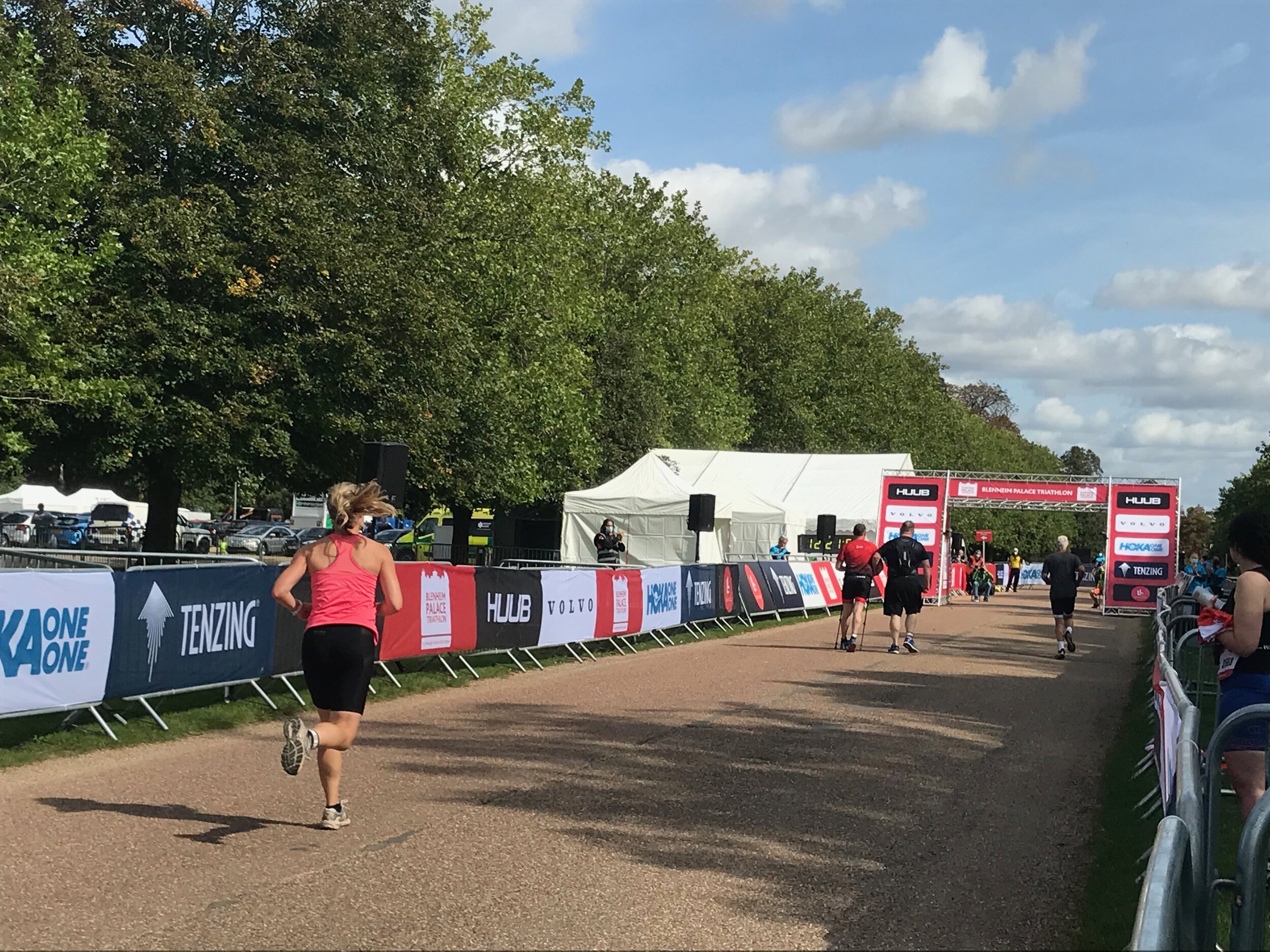
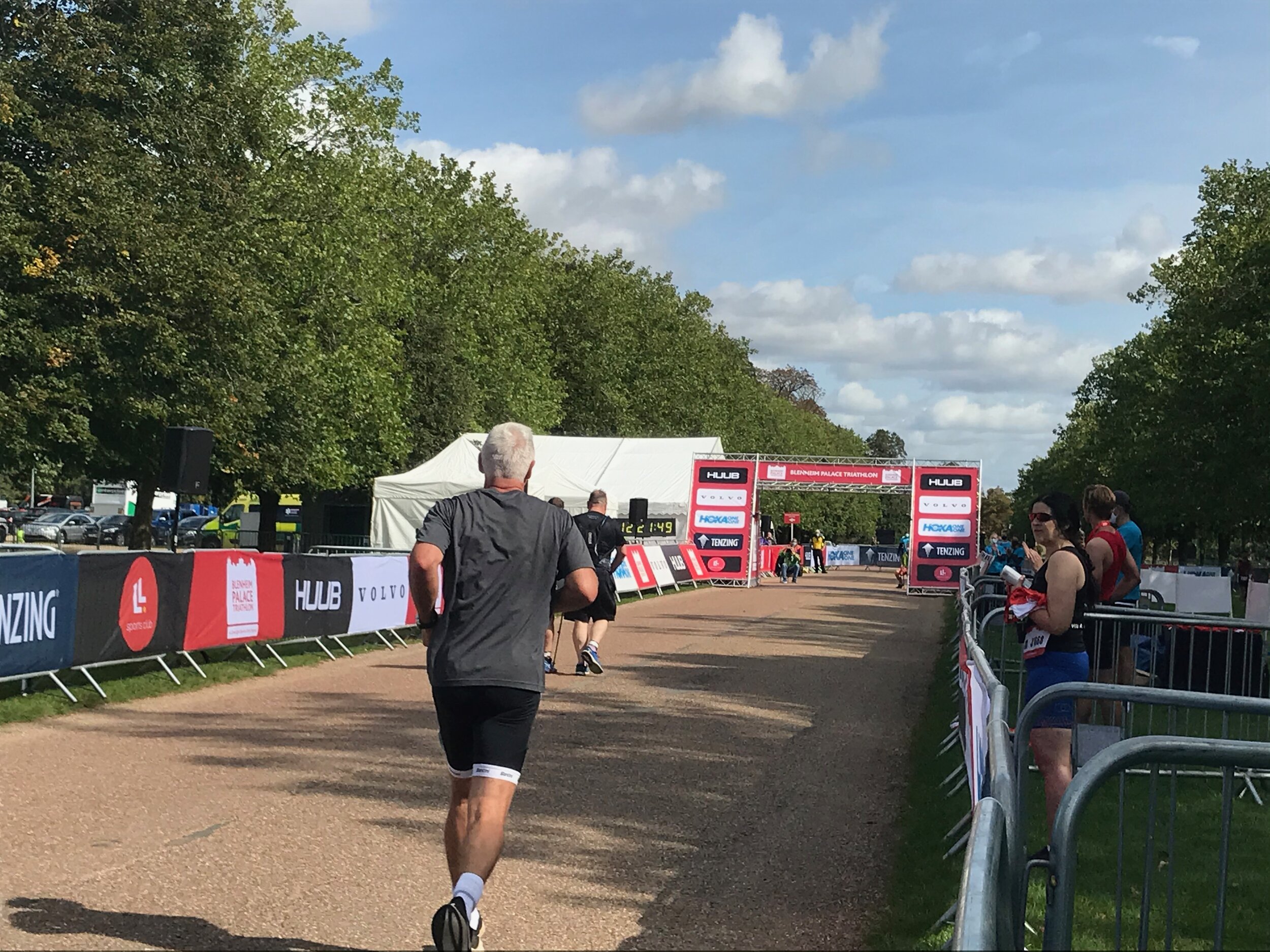

Atmosphere and Racing
The atmosphere is always going to be the hardest thing to achieve at a socially distant event. The spirit of racing was still there, and competitors were certainly smiling all the way around. The event organisers tried their absolute best to make it familiar, but the lack of spectators lead to a certain lack of energy that was missing. I believe that this will change as the normality of the new style of racing sets in. Then, athletes will be pleased to be racing, not just taking part. That said, the start line had the exciting buzz we know and each competitor certainly got their shout out and experience on the finish line, just the volume of crowd support was absent. However, the professionals in all sports don’t get that, so we shouldn’t expect that for age-groupers!
When “racing” is more about the performance externally and not just about getting around, it will be interesting to see how the events help to build the suspense of the Time-Trial setup, and athletes step up to the competitive spirit. It is unlikely to be “first across the line” for some time. For now, though, it is evident that British Triathlon and event organisers have been able to create an environment that is both COVID-safe and race-ready; how athletes take it on and bring more competition to the safe environment is really up to us. That is the exciting part of new racing!
We’re here to help
Tri Training Harder are one of the leading Triathlon coaching providers in the UK, using our wealth of experience to unite scientific and technological research with already well-established and successful best practices, to create a formula for triathlon and endurance coaching that works.
The result is an honest, dynamic, yet simple new way of constructing an athlete’s training to allow them to reach their potential.
If you’re planning your next season, just starting out in the sport or are looking for extra guidance at the very top end of the field, we are here to help, and our coaches would be delighted to hear from you. You can contact us via the website, and one of the team will be in touch.

